How little joy there is in today's technological life. Everything has become boring and monotonous, and if there are glimpses, their light goes out at the first meeting. Take, for example, Nokia X.Few people are friends with design, and if the device looks attractive, then it is most likely on Windows Phone... I've always liked Sony's design, but something was wrong about it. Now I know - it was stretched in the case with and indecently stretched in the case of. Sony Xperia Z1 Compact is best device of all that I have seen lately. There was no need to invent anything, just make the smartphone smaller. Case with Htc one mini was different, there the device looked good anyway, the design immediately sparkled with new colors, and this is felt at the very first acquaintance.
Design and ergonomics
There are practically no changes in appearance, compared to. The only difference is that all slots have moved to the left side. The SIM card slot, which used to be on the right, is now on the bottom left, otherwise there are no differences. At least externally, but the case materials are slightly different. In the home market of the Z1 Compact, everything is sold with the same glass lid, but for the rest of the world, the lid has become plastic. I don't see anything terrible in this, and the tactile differences are not noticeable, but it scratches much faster. At the same time, dust and lint are not attracted to it, unlike glass. I can only guess what the journalists did with the test sample before me, but it came to me with a completely scratched lid. If I was delighted with the design, this does not mean that there are no questions about ergonomics. Take at least the stroke of the buttons - they are tight, and the second position of the camera button is so deep that you literally have to climb into the case with your finger. I will happily write off such shortcomings on dust and moisture resistance. The volume rocker is unusually low, but you can put up with it.
Above is an uncovered headset connector - it's nice that nowadays they have learned how to make such connectors dust- and moisture-proof without any plugs. It was also a pleasure to constantly pull them! On the right are all the function keys: the lock button, volume control and camera. I have already mentioned them above, there are no complaints only about the lock key.
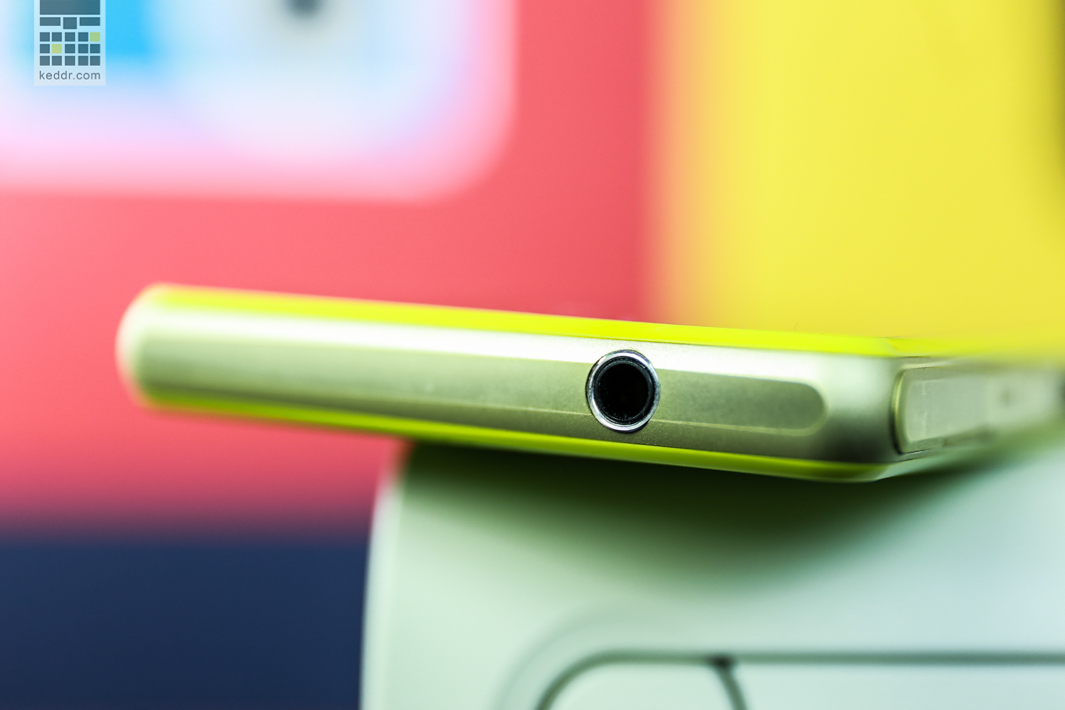
On the left are all slots under the caps: for SIM and MicroSD cards; and a connector for MicroUSB, by the way, there is support for OTG, as in most Sony devices. There is also a two-pin connector for connecting to branded accessories, which you most likely will never need. Below is a nice speaker grill and a groove for attaching a strap. The speaker sounds the same as it looks - good. True, it happens that at the high frequencies it cuts the ear, but in general it can be written down rather as a plus.
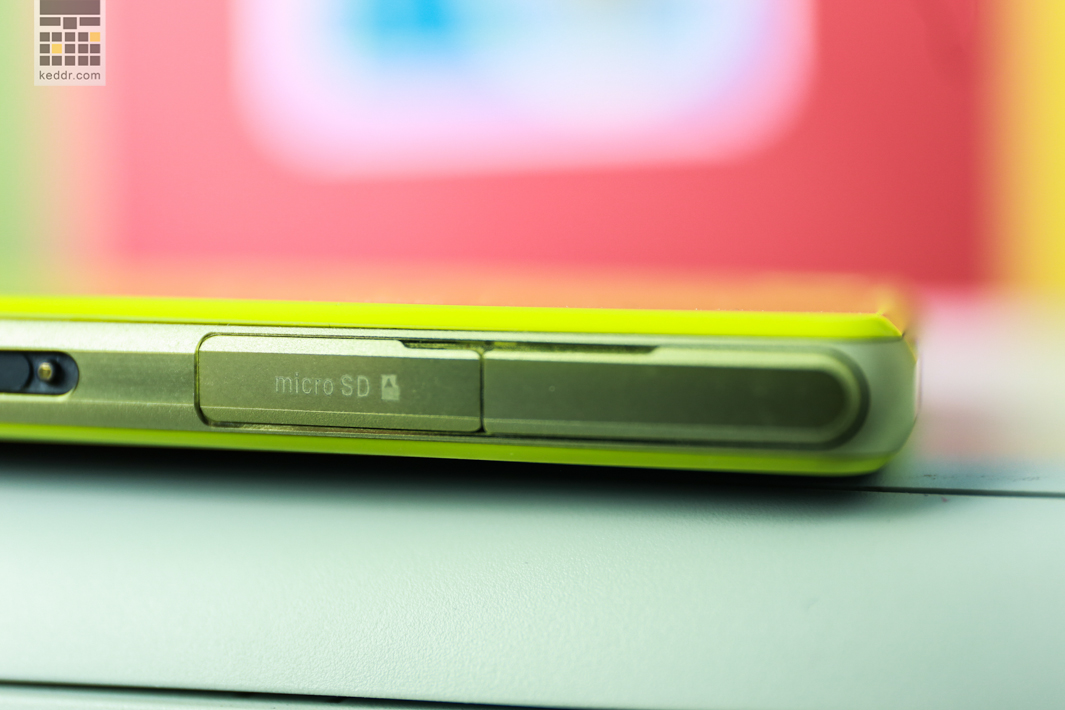

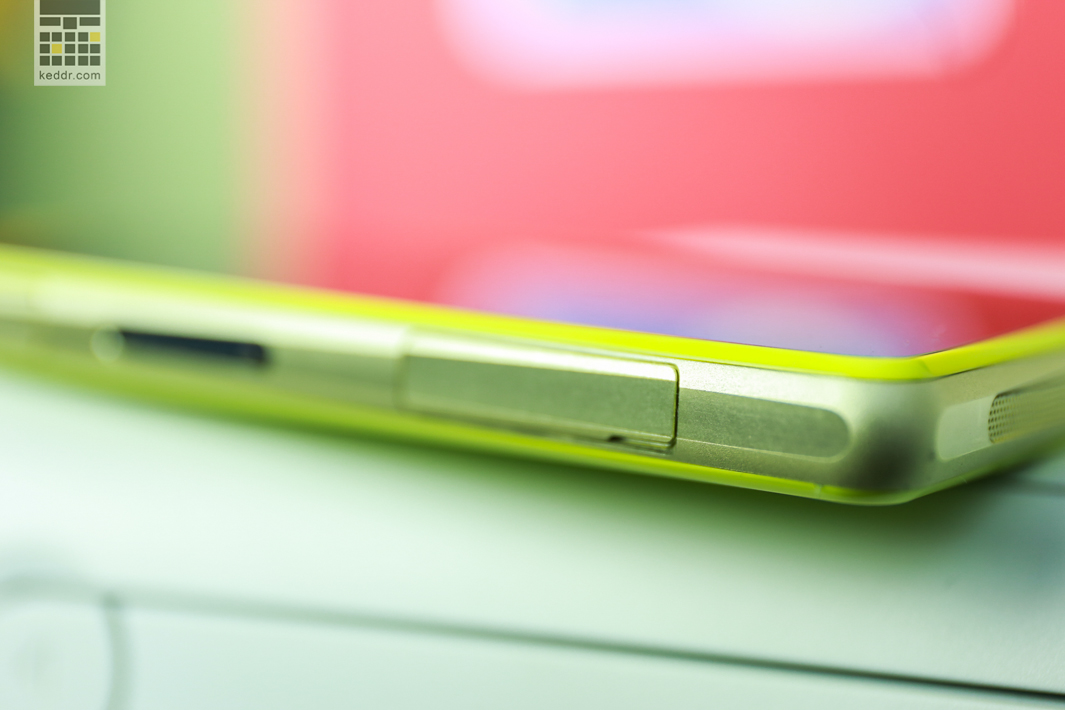
On the back, on a plastic cover, there is a 20.7 MP camera, a flash, and under the cover there is an NFC chip, as the corresponding logo tells us.
In front, under the earpiece, a charging status indicator is hidden, next to it is a front 2 MP camera and sensors, and below is a 4.3-inch display, under which there are three touch-sensitive control keys. An interesting feature of the front panel is that it is covered with a factory film, the Sony logo is applied to the film, so if you lose the film, the logo will go away with it. Dust and lint are still sticking to the front.
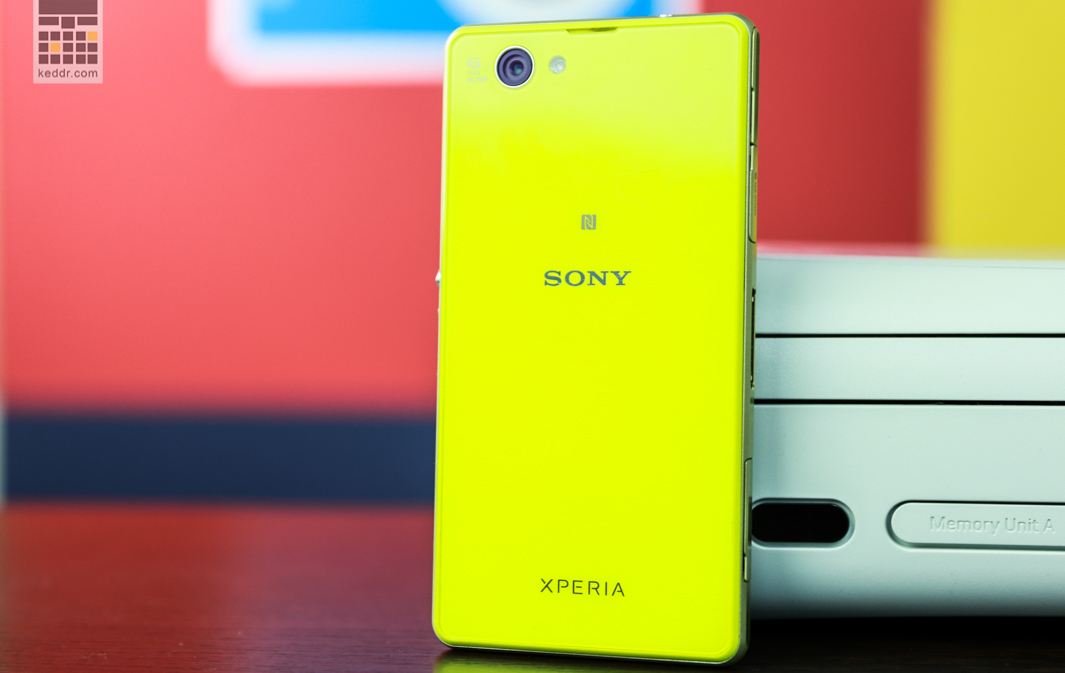
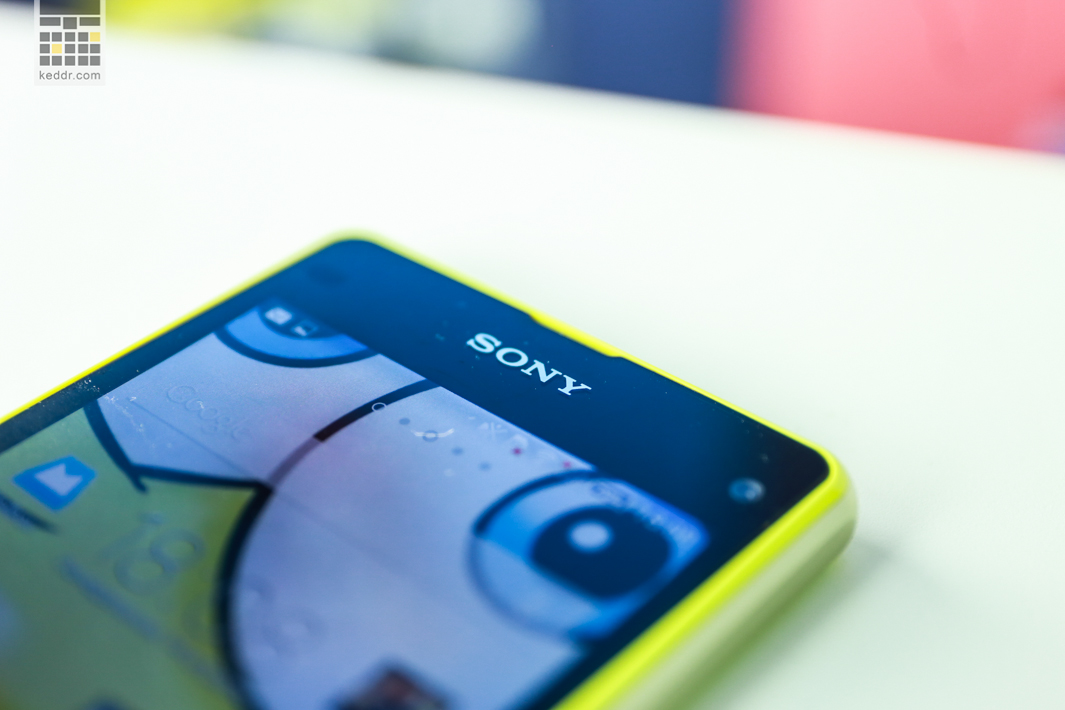
The conclusion on design and ergonomics is as simple as possible - the smartphone looks very cool, and all ergonomic shortcomings can be happily blamed on protective properties. By the way, protected smartphone according to the IP58 standard, this means that it "tolerates" dust, but you should not be zealous, and as for moisture resistance, it can be kept under fresh water at a depth of up to one and a half meters for no more than half an hour.
Display
The device is equipped with a 4.3-inch display made using IPS technology, which is not a priori for Sony, for example, it uses a TFT matrix. Device resolution - 1280 x 720 pixels (342 ppi). I'll make a reservation right away that you can work with this display with gloves and wet hands (the corresponding options can be turned on in the menu). The factory-made film on the front panel is also easily scratched. As for the picture, it turns slightly pink at the corners, and in dark tones blue predominates, but the display is still bright and juicy enough, and the overall impression is good. A certain dissonance can arise when watching films, in all other cases contrast is striking, but you quickly get used to it. The maximum margin of brightness - on high level... For lovers of "perversions", the manufacturer has provided an RGB setting, there is an assumption that with its help you can achieve the desired result, but you need to have a grandmaster's endurance. Well, the "corporate" problem with thin fonts has not gone anywhere - it happens that it is simply not possible to read them.

Cameras
Sony Xperia Z1 Compact can be safely called a camera phone, since it has a 20.7 MP camera sensor from the Exmor RS family with a focal length of 27 mm and an aperture of f / 2.0, but this does not affect the appearance of the device in any way - nothing sticks out, does not sticks out. The camera looks aesthetically pleasing and not defiant. I really liked the automatic shooting mode, but it shoots at a maximum resolution of 3264 x 2448 pixels. In this mode, the camera quickly rebuilds depending on the lighting and distance to the subject. Basic modes (such as macro photography, for example) are automatically activated, which is convenient. There is also a manual setting of shooting parameters, in which you can customize whatever your heart desires. This is where the HDR mode is located, it's inconvenient simply because it takes a long time to switch. And I didn't really like its implementation. The maximum resolution of pictures in manual mode is 5248 x 3936 pixels. Image stabilization is there, but it is not optical, but digital.

A function called AR effect is, in fact, an augmented reality function, when shooting, you can choose one of the presets, for example, "jungle", and thickets with dinosaurs form around the subjects. Usually I would not pay attention to such things, but I liked the pleasant implementation, in a company you can play around with such things a couple of times. The Info-eye function is essentially an analogue of Google Goggles, only here additional information can be displayed when hovering over an object, and not after shooting. The Timeshift burst function takes a quick burst of shots (61 frames in two seconds), after which you can choose the best one, or you can leave everything. There is also an application Social Live, which allows you to stream videos directly to Facebook, while leaving comments you will see on your smartphone screen during the broadcast. Needless to say, this will require a high-quality internet connection. More modes can be added to the existing set of modes from the Sony Select store. Front camera - 2 MP. Both shoot videos in FullHD, and I really liked the quality, the stabilization is one of the best among those that I have ever seen. I happily give this camera an 8 out of 10, although the noise in the pictures appears from time to time.
Examples of photos and videos
Specifications and software
The smartphone got all the same technical characteristics as: Qualcomm processor Snapdragon 800, clocked at 2.2GHz, Adreno 330 graphics, 2GB random access memory and 16 GB storage, support microSD cards up to 64 GB, support for LTE. You can also use to expand memory USB capabilities OTG, using eg. The device has a dual-band Wi-Fi module (2.4 and 5 GHz), there is also an NFC interface. Among other things, today the device works on the most latest version Android - 4.4.2. with proprietary shell from Sony, only slightly changing the look of the system. All this works as expected, quickly, there is enough power for all occasions, and all games show maximum graphics. The device only heated up in prolonged tests slightly below the Sony logo by back cover... The battery “lost weight” to 2300 mAh, but both the screen and its resolution decreased, so for a while autonomous work it has practically no effect. At maximum load, the smartphone lives until late at night, and FullHD-video is capable of playing up to six hours at full brightness. Battery life can be increased by using the Stamina power saving mode.
The compact version of the flagship smartphone Sony Xperia Z1: Compact not only took all the best from its older brother, but also acquired other interesting features. The device reminded me of something Sony ericsson Xperia Ray - remember this smartphone? I liked him very much at one time.
Design
I would like to say in advance that I will not repeat the thoughts expressed in the Z1 review, they are technically identical devices. Here I will only talk about the differences, I will draw conclusions whether it is worth buying or not. By tradition, let's start with appearance... If you suddenly want to know something about performance and other points not mentioned here, you are welcome to read Sony review Xperia Z1, there are answers to all questions.
The device is very similar to the Z1, but with a decrease in the display diagonal, several metamorphoses occurred. First, the Z1 Compact is much better in the hand. And the metal "frame" has not gone anywhere, and pay attention to the anodizing, for the color "lime" it is special, not silver, but yellowish, closer to gold. Looks very cool. Secondly, the black smartphone is the most boring in the line, I would recommend looking at other options. This is lime, white and pink, all the colors are very pleasant, I myself use yellow, for spring and summer it is the very thing - and it’s trite already tired of the same type of black or silver bars. And the black smartphone is the most easily soiled, fingerprints are very striking.
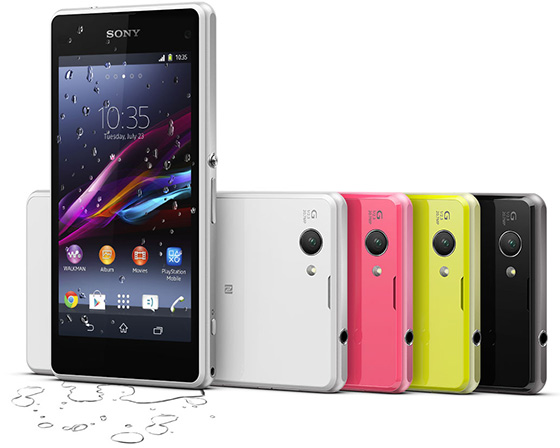
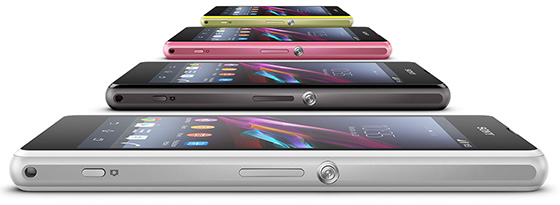
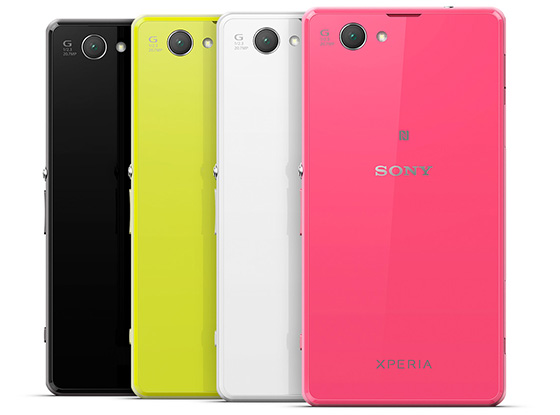
Thirdly, instead of glass on the back (like the Z1), a plastic panel with a film is used here. This is written on the official website. Finally, the device has become smaller and, despite the similarity to the Z1, is perceived as a completely different device. On the one hand, it is fair to say that this is the same gadget as the Z1, on the other hand, it is a slightly different device.
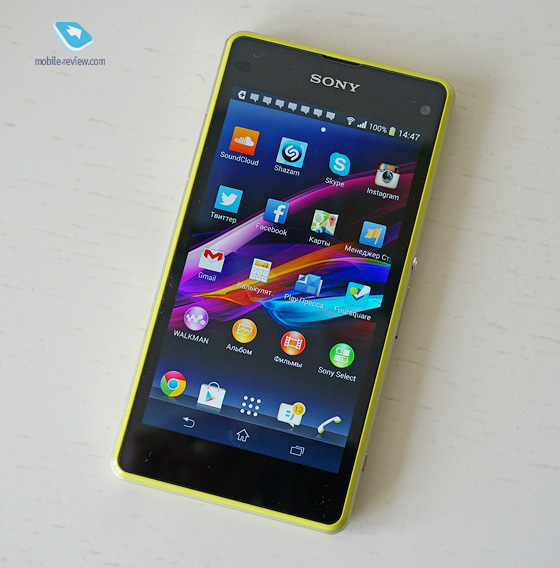

Unfortunately, the Z1 Compact belongs to the film generation, the films are installed both in the front and in the back, do not try to remove it - you will immediately lose the Sony inscriptions, you will have an unnamed device. Films are scratched, this is not particularly noticeable on a device of this color, it is seen very well on black. If you are angry about films as a phenomenon, but you want Xperia, wait for the Z2, it will be on sale soon.

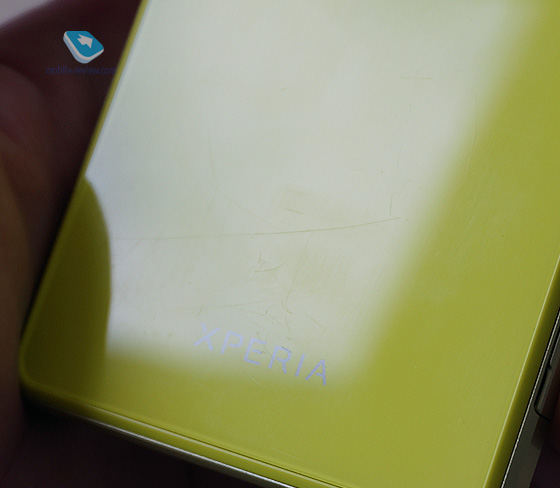
In addition to the films, the caps are very angry, I have short nails, it can be difficult to open. Well, at least the 3.5 mm jack is open, but for charging you can use the stand for the magnetic jack, I recommend you buy one too. It is unlikely that you will open other slots often, there are two of them, for a SIM card (microSIM) and a memory card (microSD). Supported cards up to 64 GB, everything is typical - like the Sony Xperia Z1.
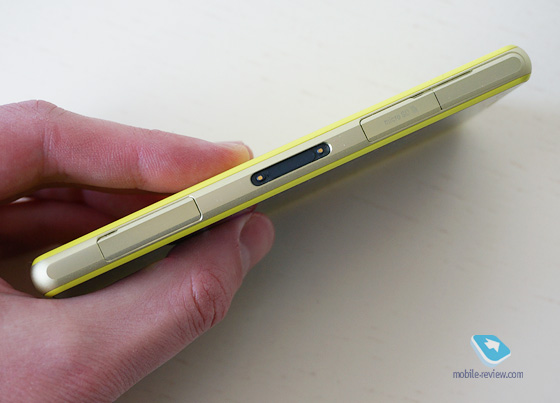
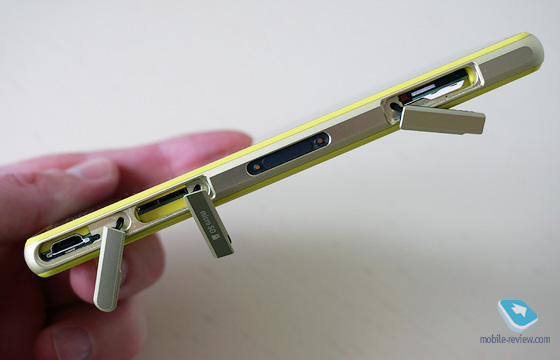
In general, I like Sony's approach, they really just reduced the flagship smartphone without any changes to things really important for the user. For example, they did not remove the memory card slot - but they could. They did not make the camera worse, did not remove the water protection. And Z1 Compact can be safely bathed in the sink, washed after the gym. Considering the colors and features of the device, a smartphone may well be the perfect vacation device for someone. True, sand can leave scratches - but what difference does it make if you can use it to shoot underwater?
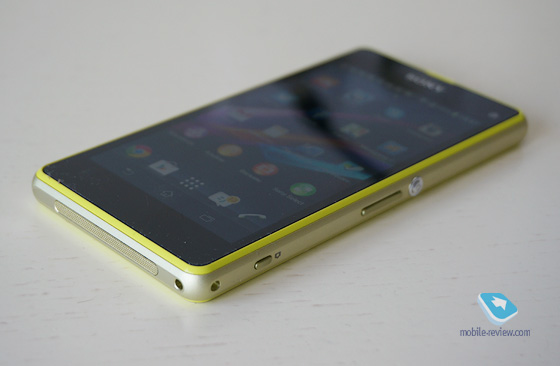
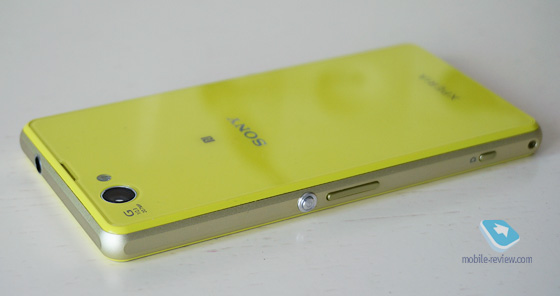
The exact dimensions are 127 x 64.9 x 9.5 mm and the weight is 137 grams. Slightly larger than the iPhone 5S, but with daily use, the difference is not noticeable. Here is the Z1 or Z2 - yes, you feel in your pocket, but the Z1 Compact and 5S are just kids by today's standards.
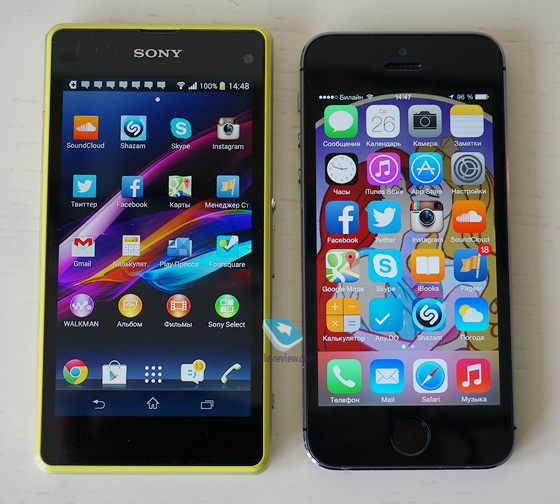
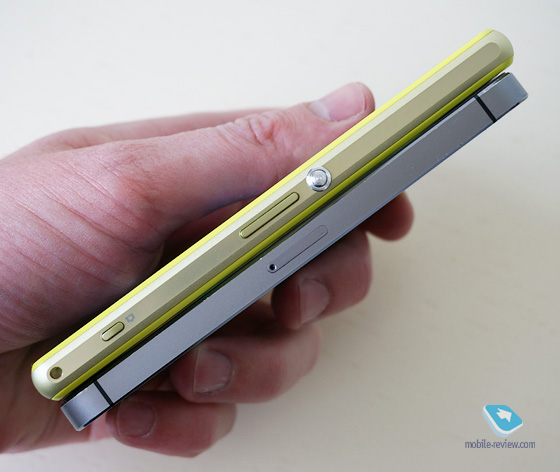
The controls remain the same, there is a camera button, for many this is a big plus - when pressed, you can quickly take a picture, the behavior of the button is customizable. The power button is traditional, if you hold the device in your right hand, your thumb rests on it. Below is the volume rocker. There is a light indicator right in the speaker, it informs you about various events. At the bottom there is a groove for attaching a strap, next to a perforation, a speaker is hidden under it. It is not loud, much quieter than the iPhone 5S.
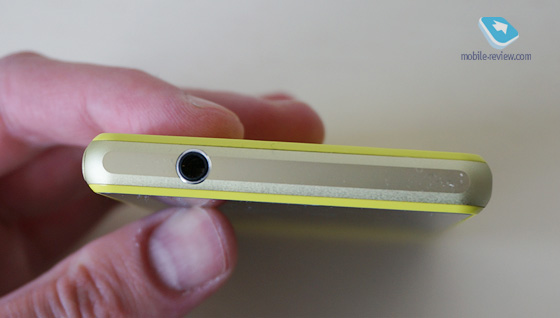
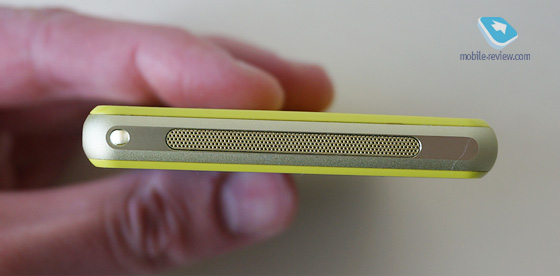
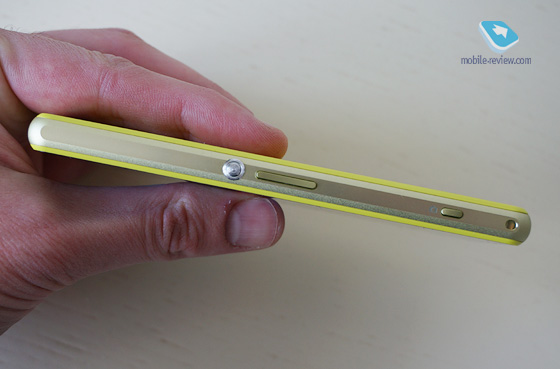
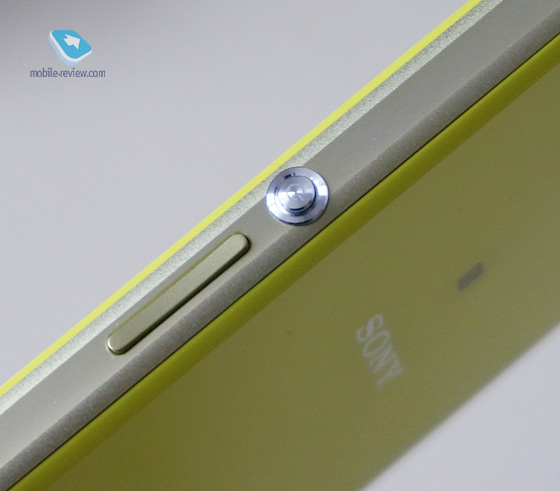
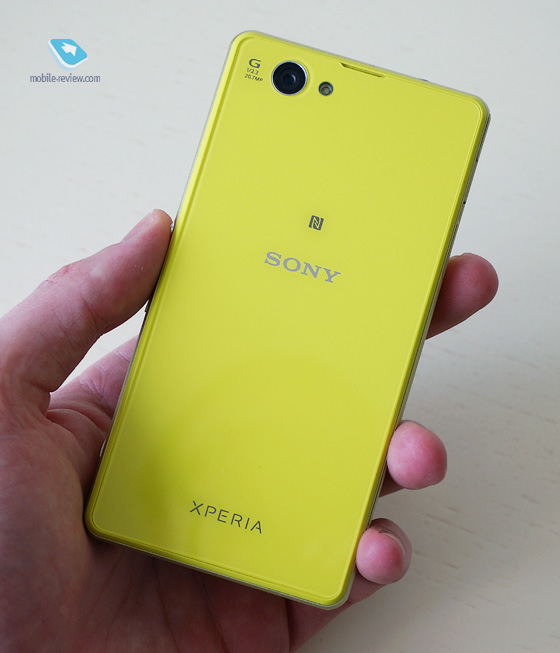
Display
I must say right away that the display here is much better than that of the Z1, this primarily concerns the viewing angles, there is no fading. Good black color, the image does not hurt the eyes, but the screen is slightly yellow. In the settings, you can play with the white balance, but this does not bring a visible effect - and in general, I do not quite understand why these settings are needed. No matter how you move the sliders, it only gets worse. However, this is a subjective opinion. The Z1 did not have white balance settings, and there was no mode for working with the screen with gloves, these are also the differences between the Z1 Compact.

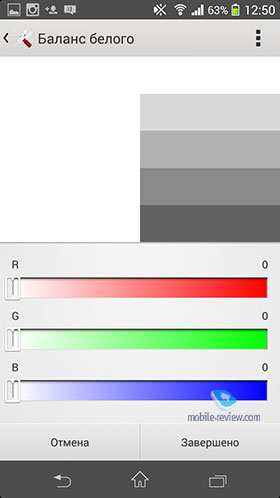
The diagonal of the TFT display is 4.3 inches, the resolution is 1280 x 720 pixels. The official documents indicate exactly the TFT, which screen is in the Japanese version, I do not know. After Z1, this one seems very good too.
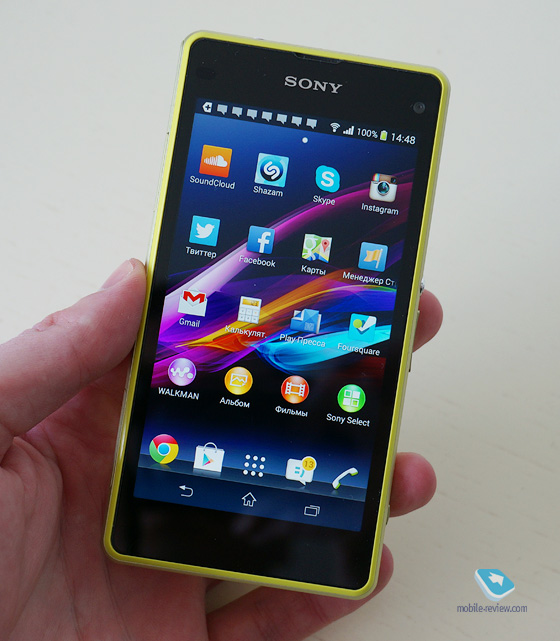
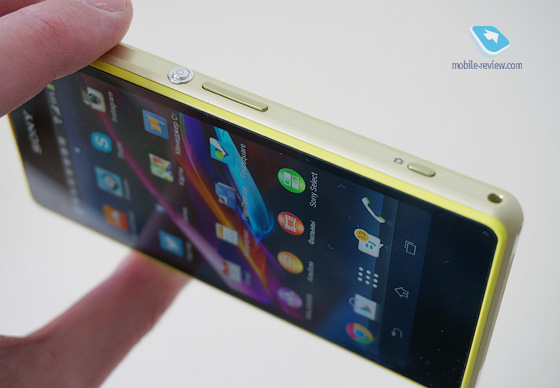
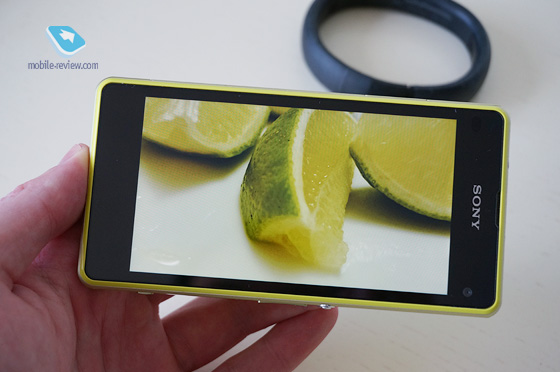
Everyone who is used to big screens, I want to warn you - everything looks different for the Z1 Compact. We are talking about various programs, sites, videos, and so on. If you could use the Z1 as a universal device capable of replacing a tablet in some way, I'm not talking about the Z Ultra, then with the Z1 Compact the story is different. I am reminded of another successful Sony smartphone, even Sony Ericsson. Think of the Xperia Ray. A wonderful gadget on Android base, with an excellent design, a good screen and good performance - and most of all I liked the size of the device and the mechanical semicircular button.
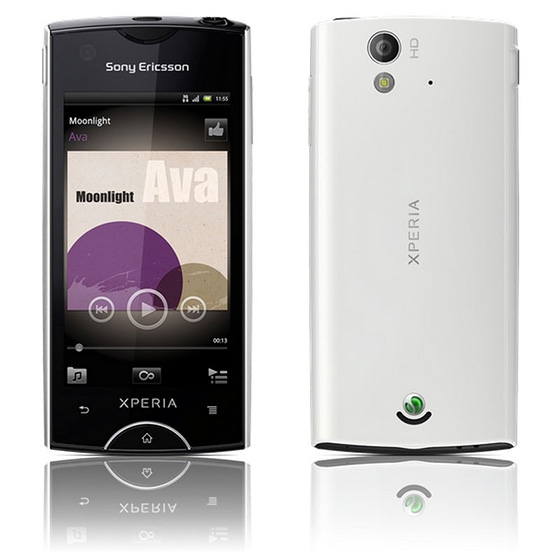
Many then said that Ray was a stupid device, there was no powerful processor or some wild characteristics. It was the image component that bribed me. And the audience for such devices, of course, has not disappeared anywhere - these are people who make calls more often, write messages, that is, use a smartphone as a phone. And all sorts of "smart" functions are of secondary importance. If you ask the question, “why not buy a phone then?” I will simply answer - where have you seen phones with a good design now? Everyone, friends, the days of Sony Ericsson W880 and Nokia 8800 have sunk into oblivion.
In general, Ray had fans, and he sold well - although SE then had a difficult period, search for itself, continuous losses. There was no continuation. Maybe the Sony Xperia Z1 Compact is a sequel?
Problems
- On the plastic cover and scratches on the film. I already said about this above, there is only one way to solve the problem - to stick another film. Or choose another device. Or wait for Z2.
- On the flash, due to the smaller size, there is a flare when shooting at different times of the day and night. While not all users experience this problem, it will likely be fixed programmatically. How often do you use flash? Personally, I never. On my iPhone, I only turn it on to find something in the dark. I tried the Sony Xperia Z1 flash indoors in the dark, during the day, I can say that it really "knocks out" colors and it is better to turn it off. There is another problem, you have to get used to shooting, the pictures may turn out to be bad if you use the button - when you press and release it, the camera moves slightly, resulting in a slightly blurry image. The point here is again in resizing, I did not notice this with the Z1 - it is better to press a button on the display. Try it, for sure the frames will turn out better.
- There are complaints that the camera button stops working or works every other time - keep in mind that in order for it to work, it must be pressed fully until you feel vibration, practically drowning it into the body. It has two positions, a short press activates focusing, a long press - a picture. Or launching the camera.
- And about the camera, I do not recommend using the automatic mode, the resolution is only 8 MP, the quality is worse than with manual settings.
- Marriage of buttons, display - I have not encountered this. It is worth checking before buying
- Quiet conversational speaker, and the usual one too. I have not noticed this. The usual speaker is quiet, but there are no problems with speaking, the only thing is that I turned the volume up to full. That the voices sound a little unnatural (unclear), it is, but I will not call this a problem.
- Plugs. Many are afraid that they will come off. The problem is solved by buying a docking station with a magnet, but, in general, they never came off on my Sony smartphones, this should be tried. And the service center will probably issue a new one without any problems.
Which one is serious? The films upset me, the rest does not bother me at all. If you get used to it, the Sony Xperia Z1 Compact will help you to create high-quality pictures, I'm not talking about photos for Instagram and other social networks. Quiet ordinary speaker - okay, the main thing is to have a loud conversational speaker. Check on the spot for problems with buttons. I also had no problems with the screen, and I have been using the device for a long time.
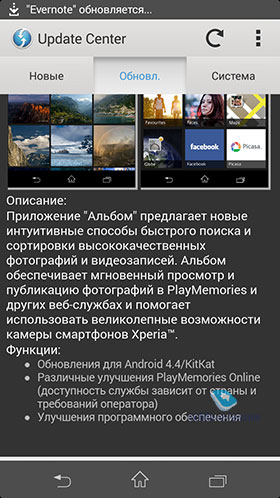
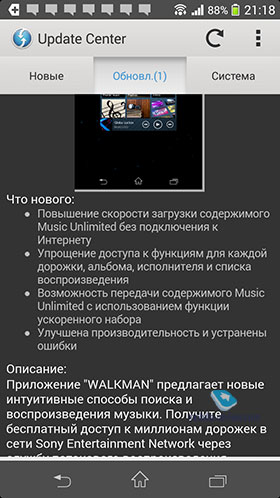
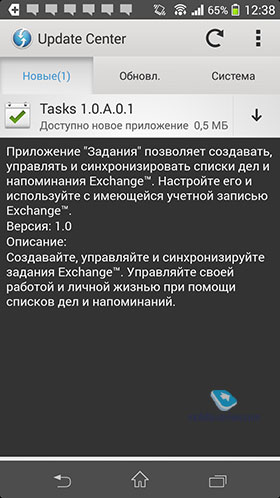
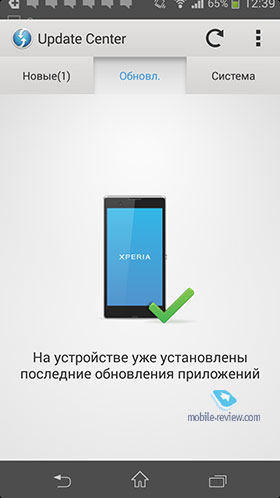
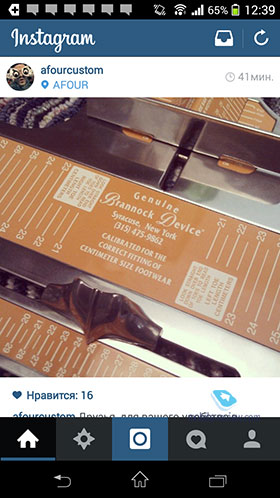

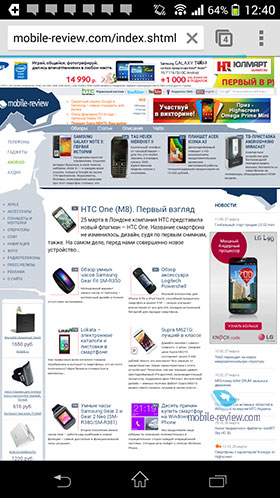

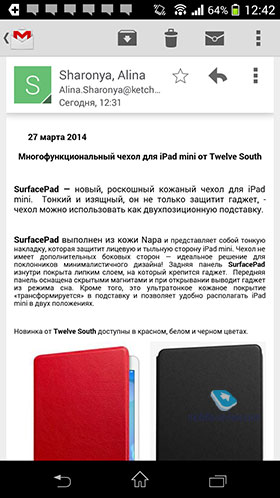
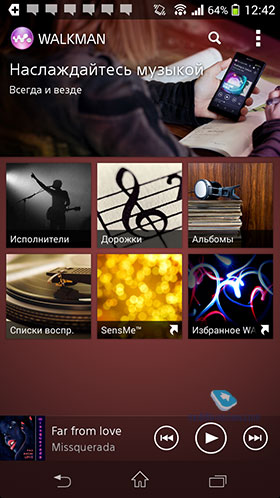
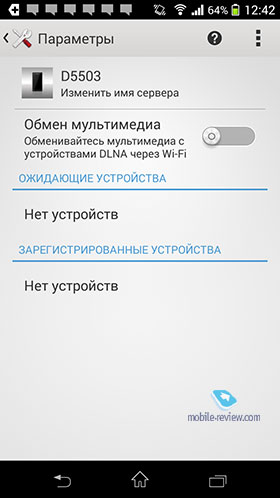


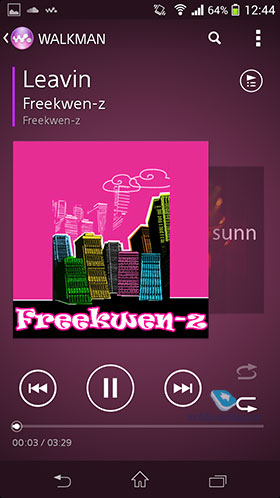
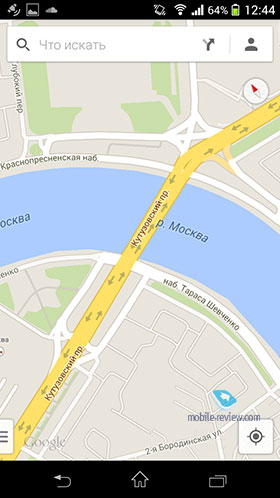
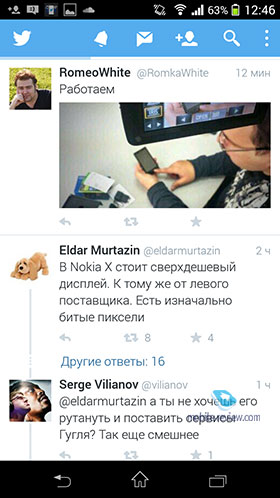

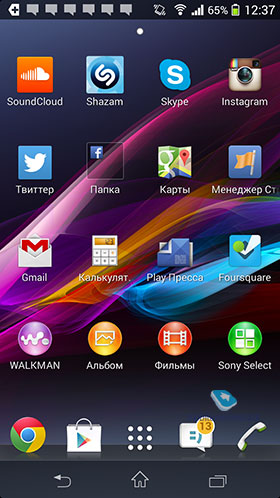
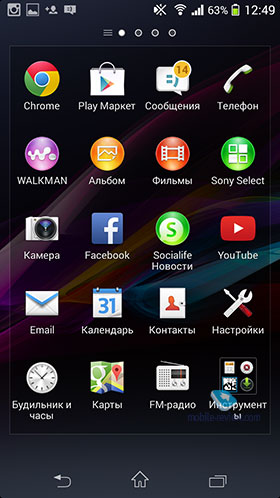
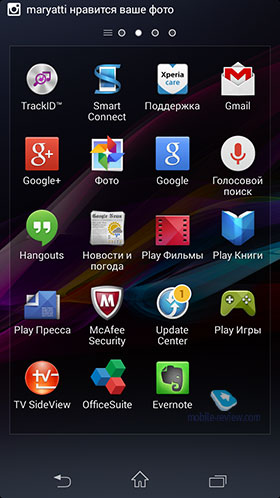
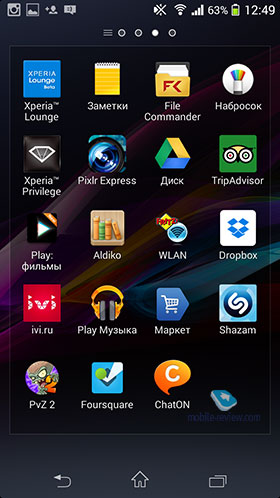
Working hours
The claimed battery life is 18 hours of talk time, 94 hours of music playback (not every player is capable of this), in video playback the Z1 Compact lives for about 12 hours. A 2300 mAh battery is installed. Compared to the Z1, the smartphone works much longer, sometimes it lasts for a couple of days, if only I call and listen to music. It is worth noting and fast charging battery (relative to Z1).
Keep in mind, if you have Stamina mode activated (i.e. power saving mode), then third party applications may not work on time, this is especially important in relation to alarms, timers, programs for organizing the schedule.
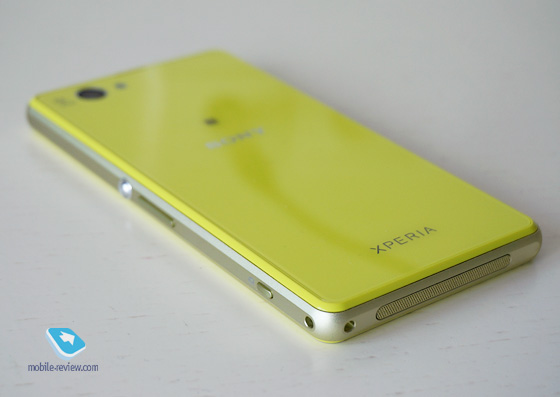
Specifications
You can read about the processor, software, memory, format support and the like in the Z1 review.
Camera
The characteristics are the same as those of the Z1, I talked about the flash above. In short, if you do use flash a lot, then the Z1 Compact is unlikely to appeal to you. You may get an overexposed frame, I repeat, I never use this function in my everyday life, the flash works only as a flashlight. Below are a few examples of photos, the weather in Moscow is doing fine now, so it was great to walk early in the morning in one of my favorite areas. As you can see, with the Z1 Compact, you can really create quite good frames both for viewing on a laptop screen and for printing - although I don't know if you are still printing photos? It would be interesting to know, I have not done this for a long time.
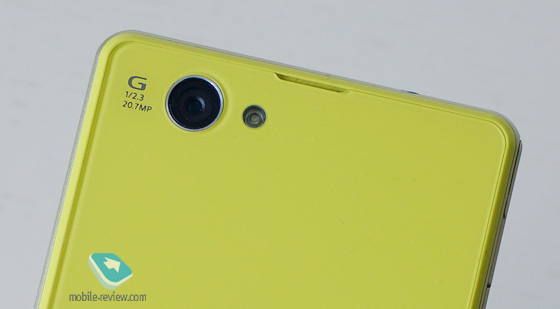

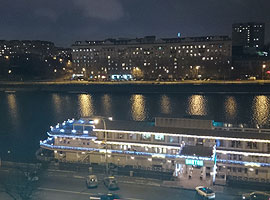
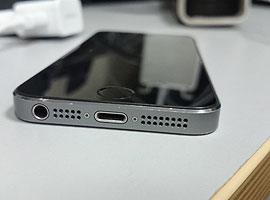
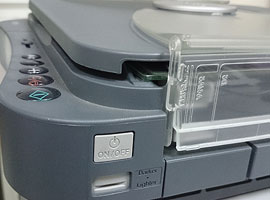


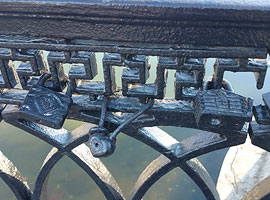




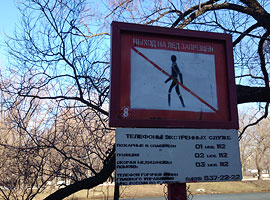







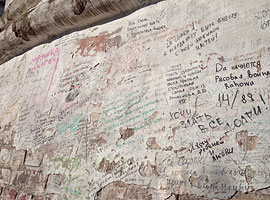

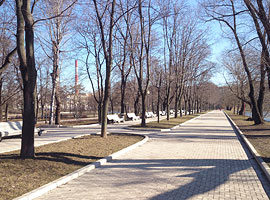

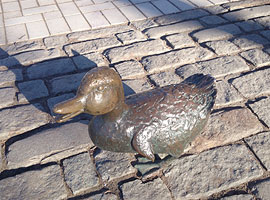
Р'РёРґР¶РµС ‚РѕС‚ SocialMart
conclusions
The average price is about 22,500 rubles, you can buy a little more expensive, or a little cheaper (about 18,000 rubles). For Sony Xperia Z1 they ask about 24,990 rubles, you can find it cheaper. Everything is written about the differences above, which device to choose? If you need a large display diagonal and the quality of the screen is not important, then a simple Z1. If you need an image compact smartphone with a normal display, then the Z1 Compact. In some ways, the younger model turned out even better than her older brother. The pros are as follows:
- Interesting design, colors
- LTE support
- Excellent performance for a device of this size
- Not a bad camera (in capable hands)
- Good sound quality with a branded headset, but not only - I would once again advise you to try the SBH-80, Sony has got an interesting accessory
- Water resistant
- Good display, better than Z1 (but smaller diagonal)
- Long battery life (compared to Z1)
The cons are:
- I really want to believe that Sony will begin to work on the quality of speech transmission and the work of speakers
- Many people will not like the software suite offered by Sony - there are too many additional utilities for an incomprehensible purpose
- Alas, it is still impossible to refuse plugs, given the presence of protection against water
- Strange operation of the flash, I repeat, for some it's a minus, some don't care
- Films. And that's it!
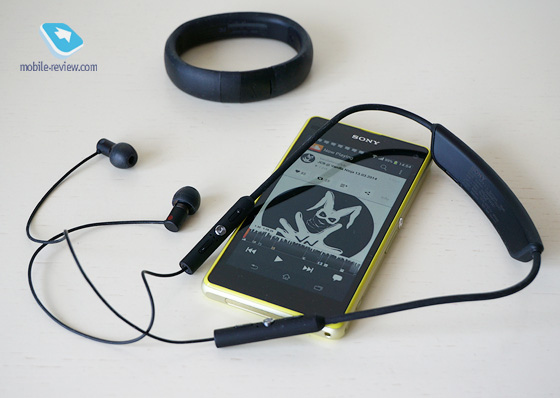
If you liked the Sony Xperia Ray back in the day and are looking for a beautiful compact smartphone now, check out the Z1 Compact. Despite the negative reviews on the network, the device appeals to me. It is convenient for them to use it as a phone and for the simplest tasks (look at mail, social networks, listen to music, take a photo), the decrease in the display diagonal has a positive effect on the operating time. It is gratifying that Sony did not deteriorate the characteristics in comparison with the flagship, this captivates many. The device turned out to be well-built and interesting for the widest audience - I hope that the Z2 will also have its own Compact.
Sergey Kuzmin ()
In early 2014, Sony unveiled a compact version of its then-flagship Xperia Z1 smartphone. The word “Compact” was added to the name, and the diagonal of the screen was reduced in the device itself and, accordingly, the dimensions. That seems to be all. Nevertheless, the model is in high demand in Belarus, even despite the release of a new flagship - Xperia Z2.
The Xperia Z1 Compact is actually a rather strange phone. Strange because Sony did not follow the path of competitors and did not release a mini-version of the flagship with a similar name and worse technical characteristics... The compact model is no worse than the Xperia Z1, apart from the size of the display. In some respects, it looks even nicer than its predecessor. We have had a version in a purely feminine color, and we can confidently say that the Compact is a great choice for girls.
Appearance
The design of the smartphone almost 100% copies the appearance of last year's flagship Sony. The design differences are minimal. The only thing that catches the eye of a sophisticated user is the flash that has moved to the right of the camera and the swapped microUSB connector and microSD slot. The last decision of the manufacturer is justified - it has become more convenient to connect the cable.
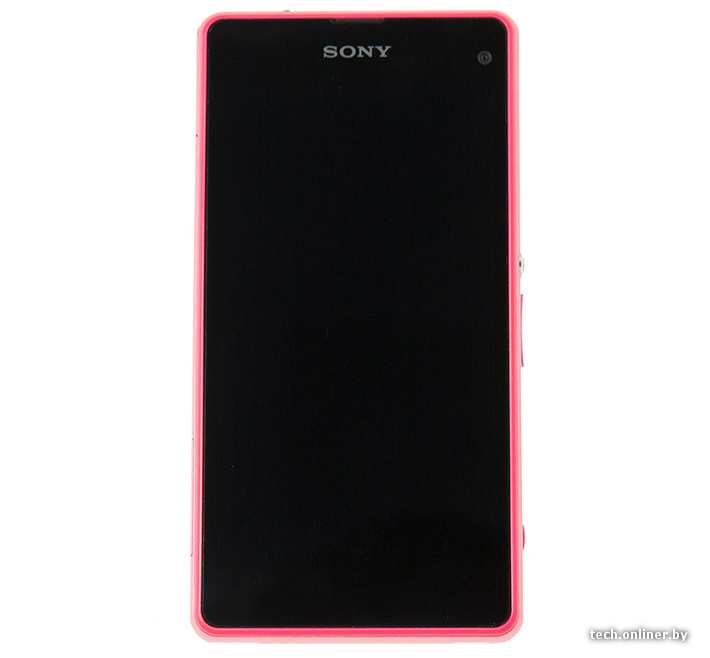
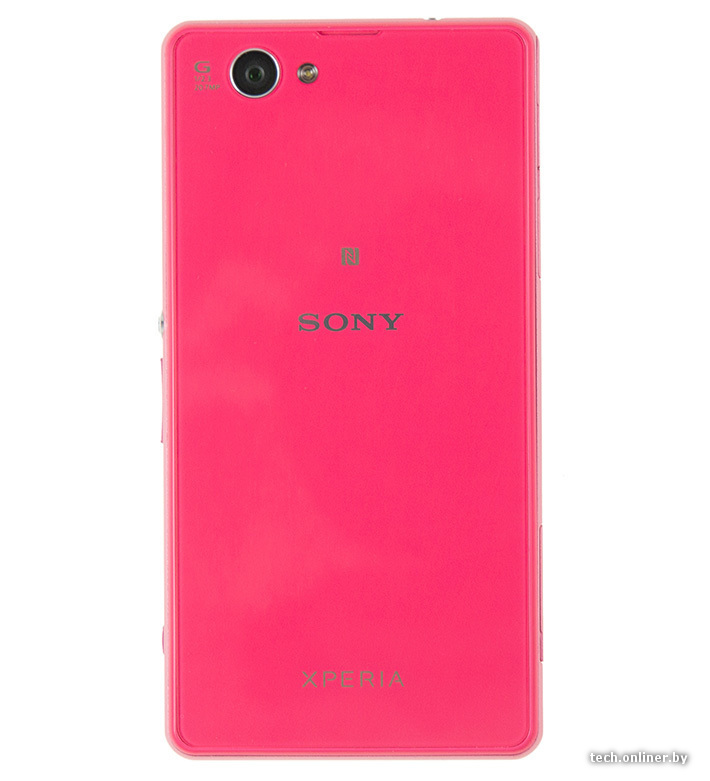
For some reason, the slot with a flimsy microSIM tray was moved from the right side to the left, which now looks extremely overloaded. It is not known why Sony took this step, because the phone did not receive any obvious advantages from such a rearrangement.


The rest of the design of the device has not changed. The smartphone is still made of a metal frame, plastic and glass. Everything that is possible (except for the audio jack) is protected by plugs. The device still easily withstands raindrops and even short immersion in water.
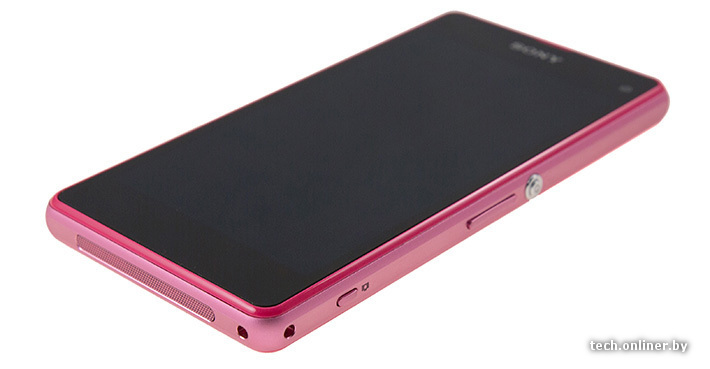
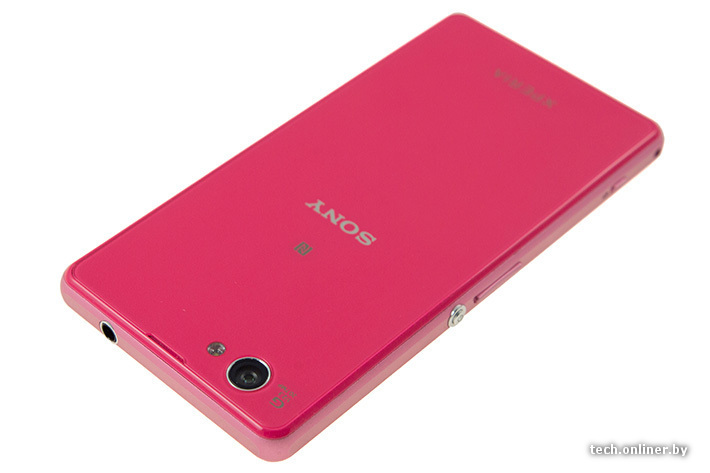
The model is available in a range of vibrant colors not found on the Xperia Z1. For example, we had a pink version, which was appreciated by many Onliner.by girls. The color looks very nice, in contrast to some of the acidic shades found in other "feminine" phones.
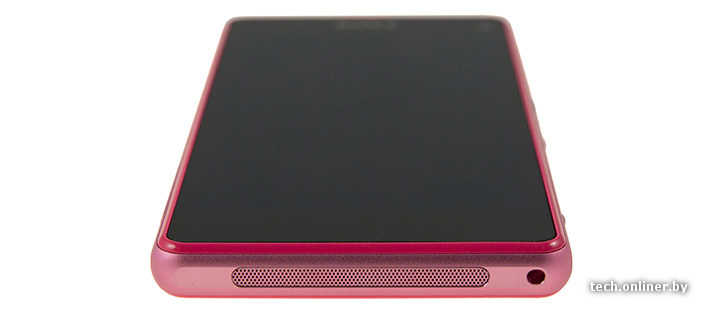
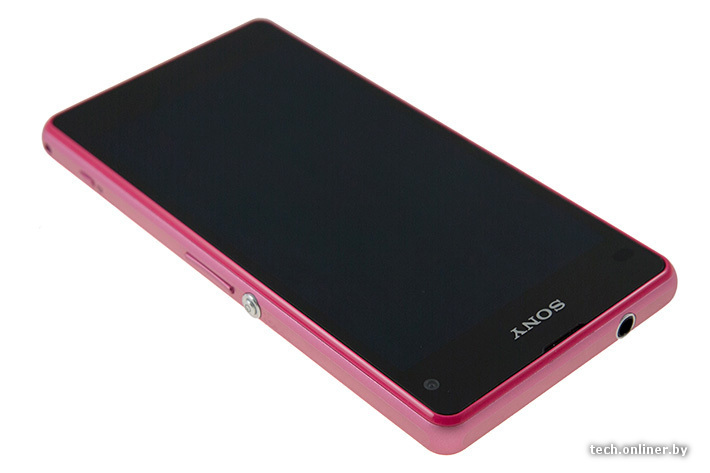
The device is equipped with a separate camera launch button. Compared to the key in the Xperia Z1, it is smaller and not as well felt. There are no complaints about the rest of the buttons. Having become a distinctive feature of the "round" and does perfectly fit right under the middle finger of the left hand or under the thumb - right.
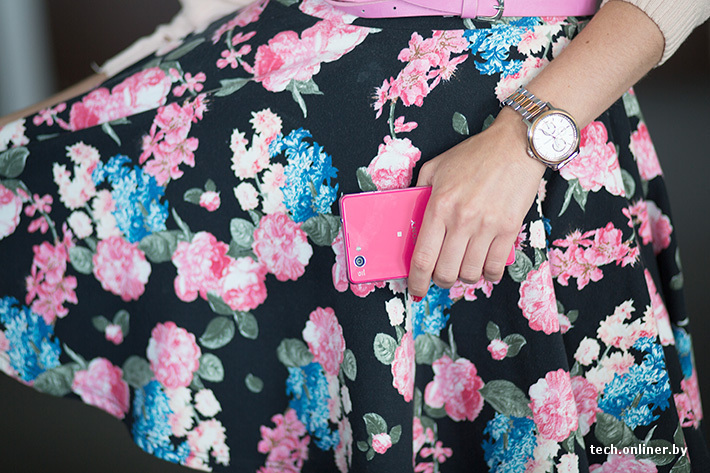
![]()
The main change of the Compact over the Xperia Z1 is the size. The compact version of the smartphone is narrower by a centimeter and shorter by almost two. This has a remarkable effect on the ergonomics of the device. The device fits as well in the hand as possible for phones of similar sizes. Even the thickness that has grown by a millimeter does not interfere. Perhaps, at one time, about a year ago, it was the Xperia Z1 Compact that could become the real flagship model of Sony. In addition, there are other prerequisites for this, which we will discuss below.
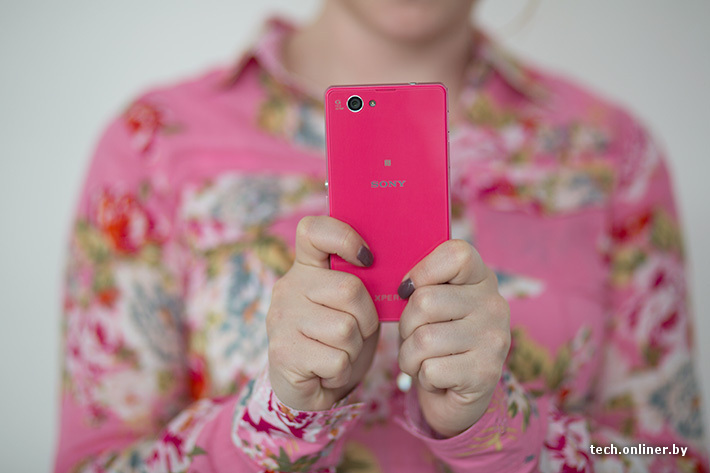
Finally, we note that the body of the smartphone remained non-separable. This led not only to the impossibility of independent replacement of the battery, but also to the congestion of the sides of the device with various connectors and buttons. In the Xperia Z1, due to its larger size and spaced elements, this was not so obvious. In the Compact, on the left side, it is difficult to see an anodized aluminum frame, instead of which there are solid plugs plus a contact pad.
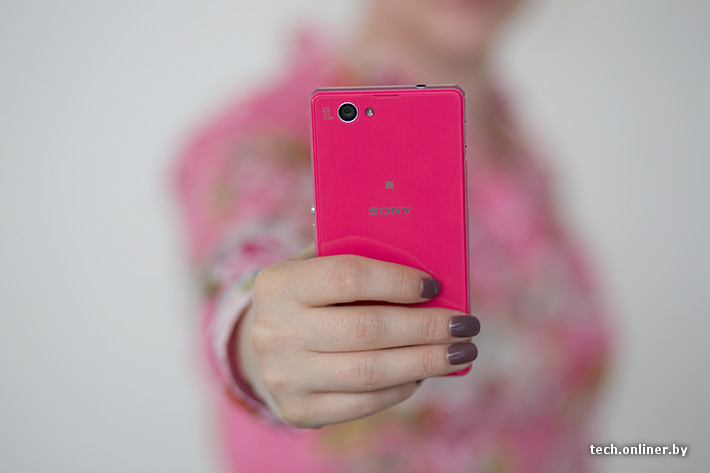
Minor things aside, the Xperia Z1 Compact outperforms its predecessor in many ways. The design has remained recognizable, and the ergonomics have improved several times.
Display
All the sudden comfort when working with the Compact was made possible by the reduced size. The dimensions of the device, in turn, have become more compact due to the reduced diagonal of the display: instead of a 5-inch matrix, a 4.3-inch one is installed here.
The resolution has also decreased - from Full HD to HD. Even taking into account the smaller screen, the pixel density dropped from 441 to 342. However, this is still more than in the iPhone 5s, the image pixelation is not visible.
More importantly, the Xperia Z1 Compact uses IPS technology instead of a TN matrix. This was good for the smartphone, since there is no fading, color bleeding, loss of detail, a catastrophic drop in contrast and saturation now. Before us is a good modern screen, the quality of which is a cut above the capabilities of the matrix installed in the Xperia Z1.
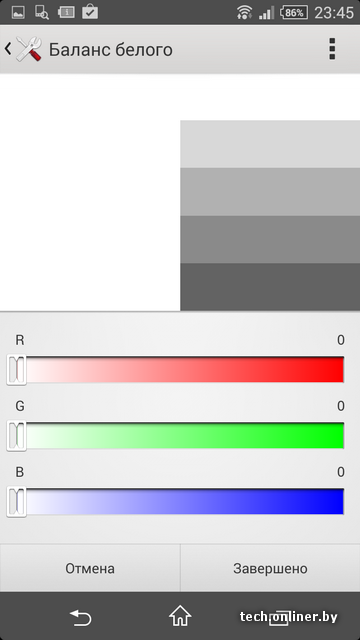

It is curious that in the display settings, a glove mode and fine adjustment of the white balance are now available. It is problematic to assess the responsiveness of the matrix to gloved hands in the current weather. As for the white balance setting, this option is purely for enthusiasts. In our opinion, the factory calibration of the screen is already done perfectly well.
Functionality
For the smartphone, the firmware has already been released with Android 4.4.4, but so far our ward is working under Android 4.4.2. However, there are no significant differences between these OS versions. As there are no differences from the capabilities of the Xperia Z1.
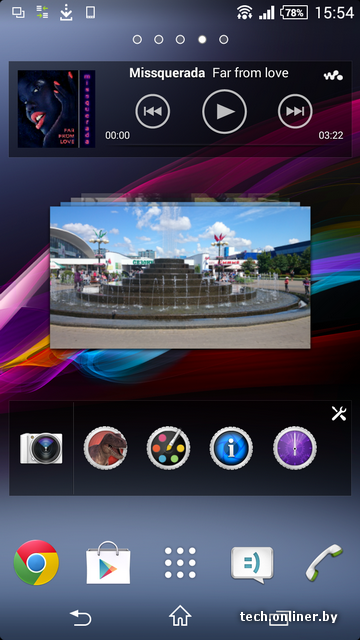
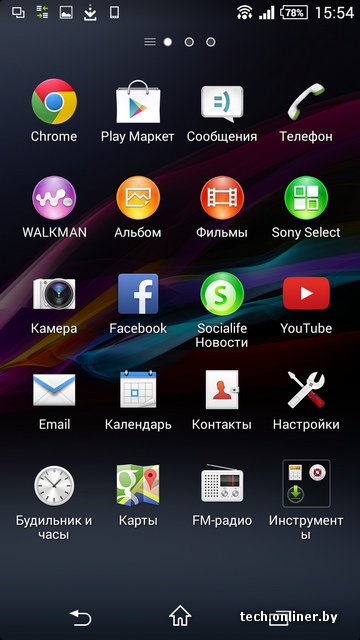
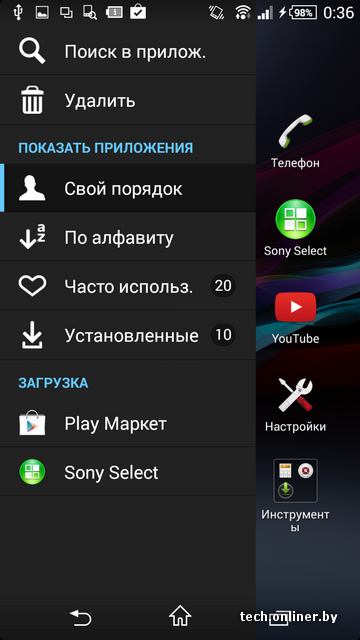
The list of small applications has not gone anywhere, as well as a sidebar in the main menu, which allows you to search for programs, delete them or sort them into different categories. From here you can get to Google play or Sony Select catalog. Kit preinstalled apps did not change.
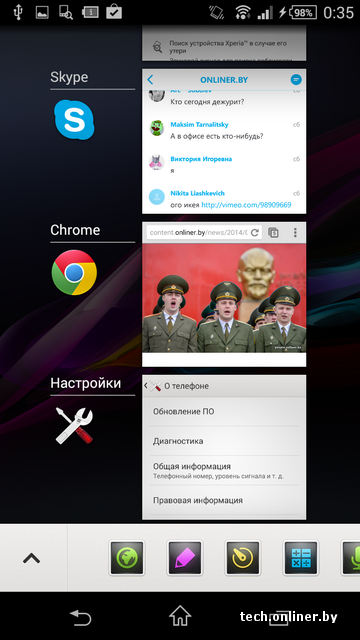
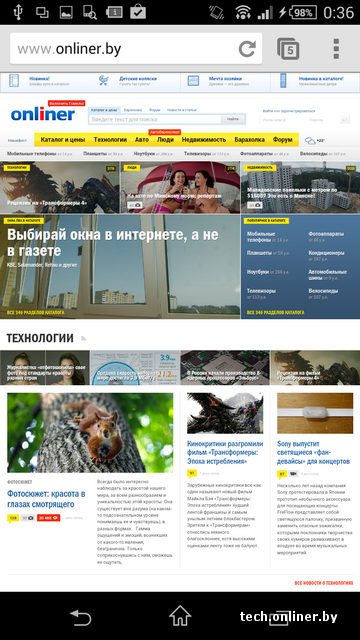
The phone also has an NFC chip, and support for LTE, which we do not need yet. But there is no IR sensor, so you won't be able to control the TV. However, last year's model had the same flaw.
Camera
The camera phone did not come out of the Xperia Z1. And since in terms of "hardware" Compact does not differ from its predecessor, improvements in working with photographs can only be expected at the software level. The main responsibility still rests with the 20.7-megapixel Exmor RS camera.
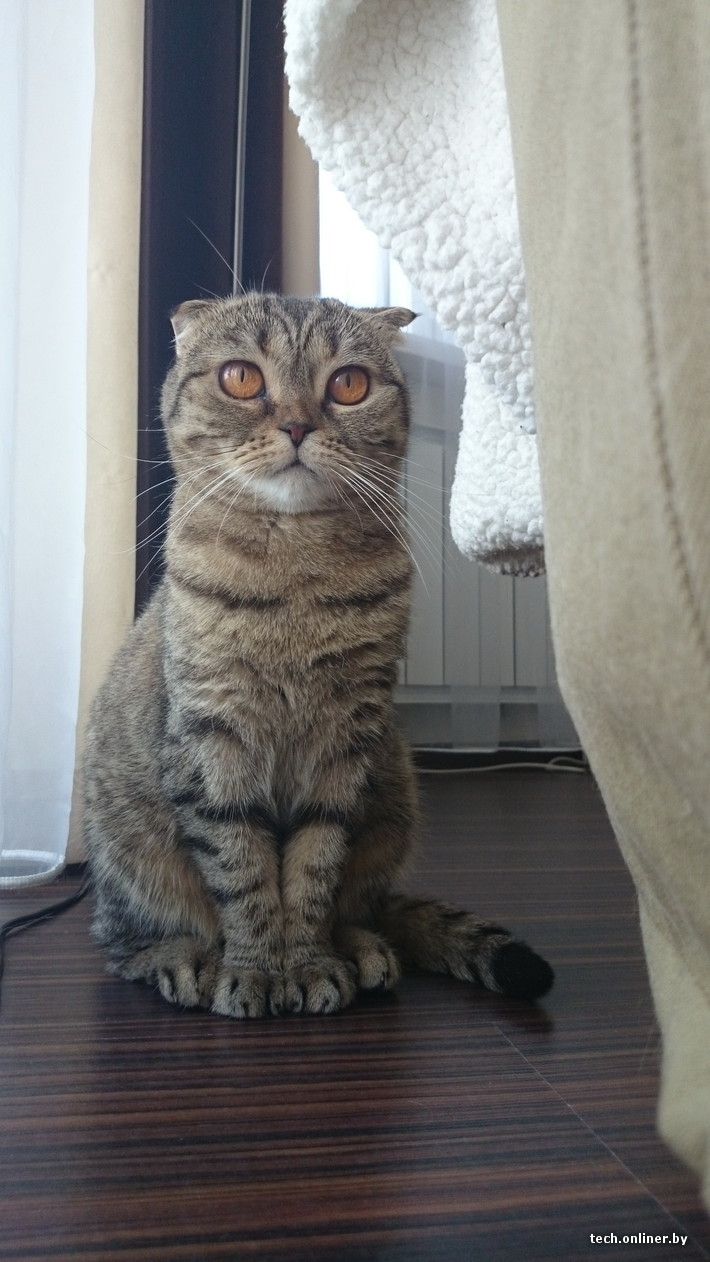
A smartphone with flagship features, but does not require a two-handed hold? Not trying to slip out of the palm of your hand? Fits into any pocket without any problems ?! Yes this Xperia specifications Z compact, aimed at geeks and photomaniacs who are not alien to common sense and a desire for comfort in handling their daily companion, which is a smartphone!
Operating system - Android 4.3
Display - IPS, 4.3 inches, 720x1280
Processor - 4-core Qualcomm Snapdragon 800 MSM8974, 2200 MHz + Adreno 330 video processor
Camera - 20.70 MP, autofocus, LED flash, video shooting 1920x1080 and HDR video + front-camera 2 megapixels
RAM - 2 GB
Built-in memory - 16 GB + microSD slot
Others - LTE, Wi-Fi, NFC, Bluetooth, FM radio, GPS / GLONASS, IP58 waterproof
Battery - 2300 mAh
Dimensions - 64.9x127x9.5 mm, 137 g
Why "compact"?
I'm not a fan of Apple gadgets, but what they traditionally should be paid tribute to is for their attention to the ergonomics of devices and their "user-friendliness", as well as for healthy conservatism. For many years, Apple smartphones were equipped with 3.5-inch displays, insignificant by modern standards, and several generations of "apple phones" changed before the fifth iPhone increased the display by half an inch - this despite the fact that 4.7-5-inch screens had become the norm in budget 150-dollar smartphones ...
Why? Yes, because Apple understands perfectly well that the smartphone should lie harmoniously in the hand! Is always! And when typing SMS on the run, and when reading in an underground crush, and when surfing the Internet, lying on your back on the lawn. No matter how puffed up the designers, no matter how they proclaim "new multimedia standards" that make five-, six- and more-inch smartphones the norm, all this will remain a subspecies of slight perversions until evolution expands the average human palm and lengthens it by her fingers ... :)
All this to the fact that the rare owner of a modern shovel phone "every minute enjoying" (according to marketers!) The Internet and multimedia on a huge display, did not catch himself thinking that in fact he would prefer a device of classic dimensions - with dimensions no more than 6x12 centimeters! Only recently, all manufacturers prefer the most powerful processors, the most capacious RAM and other innovative things to shove exclusively into large-display "shovels" ... And rationalists and realists who did not manage to brainwash the need to buy a "shovel" display you can get all the characteristics of inconvenient to use " big brother". An excellent example of this is our today's test device - Sony Xperia Z1 compact, which one of the owners called on one of the forums "the long-awaited iPhone on Android". And this, in my opinion, is an exhaustive characteristic of the new product, which Sony representatives should not be offended at, since "iPhone" is used here as a household name as a synonym for outstanding performance and ergonomics!
Sony Xperia Z1 compact :: Review :: Design and features
The first thing that catches your eye when you pick up the Z1 compact is the massive anodized aluminum frame in a circle. It is anodized in different colors - black, white, pink and acid-yellow versions are available - the latter was tested by Sotovik.
Above and below the frame is closed with glass covers - a sandwich made of Gorilla Glass protected glass. Such a sandwich is very durable and does not tend to twist deformations, which are prone to thin smartphones in plastic cases.
The front panel is solid glass with a camera peephole. The control keys are shown on the display itself. Behind the glass of the display there is an IPS-matrix - bright and juicy, which has been expected from Sony for so long!
The rear panel has a camera peephole and flash in the upper left corner. Near the camera is a small NFC symbol showing where the antenna of this interface is located.
The right side is given over to the keys. In the middle there is a large and easily detectable even blindly unlock button, under it is the volume and the camera button. The left side is occupied by connectors - three sealed "doors" hide behind them a microUSB, a slot for a SIM card and a memory card.
The upper edge is the headphone jack, the lower one is a wide mesh of a powerful speaker.
Z1 compact by modern standards of mobile fashion is worth prescribing a diet, because its thickness is almost a centimeter! But this is only for the benefit of ergonomics - after all, the very thickness contacts our palm - the ribs, side edges. And if a smartphone, as it is fashionable now, has a "cardboard profile", and in addition the manufacturer "sharpened" the edges, making the device visually thinner - then write is gone! The gadget will always try to slip out of the palm of your hand, especially when you do something at the bottom of the display ...
But the Z1 compact is not like that! It firmly grips your fingers like a good tire on a track. Optimal display width, thick edges, rough coating on them as opposed to glossy plastic from competitors - everything is done so that the gadget does not know the "joy of flight"!
Sony Xperia Z1 compact :: Review :: Waterproof
Like many of the latest Sony flagships, the "compact" continues the unique, virtually unrivaled line of waterproof smartphones. A powerful gadget that can cope with work and with any entertainment multimedia, now you do not need to change to the device "which you do not mind" when going to leisure or even extreme! You can watch a movie while sitting in the bath, or surf the net on the beach, where the fine sand will quickly make any other smartphone creak!
Moisture is not a problem for the speaker, microphone and headphone jack, since both the jack and the speaker and microphone membranes are designed to keep moisture out of the case under any circumstances. But the three blanking doors on the connectors and slots must be kept closed and checked before leaving the room to the "outdoor". Moisture penetration behind an open plug will destroy the device!
"Compact" is not afraid even of such a test as freezing! Imagine the situation - in the last autumn or the first spring "barbecue" at the dacha, the device was lost, and the next morning it was found lying in a puddle! Yes, not just lying, but frozen into it! The situation, of course, is not an everyday one, but it is quite everyday - who does not happen to ... And an unprotected smartphone after such tests will go to the trash heap - but the Z1 compact works as if nothing had happened - we checked it!
Sony Xperia Z1 compact :: Review :: Camera
The predecessor of the "compact", the older model Z1, opened in the line Xperia new class of cameras. The magnificent, but already familiar 13-megapixel module in the Z1 has been replaced by a 20.7-megapixel matrix, which the "compact" is also equipped with.
Sotovik talked about the photographic talents of this camera in great detail in the review of the Z1, so I don't see the need to painfully “rewrite” the same impressions in other words in the material about the Z1 compact. You can read about the camera of both devices in.
In this article, we, of course, do not ignore the camera, but we will not go deep into its testing - in comparison with the older model, there have been no changes in the "compact" version.
First of all, let's repeat the main conclusion - the camera is good, from the cameras mobile devices she is one of the best. But the improvements in the quality of shooting in comparison with the previous 13-megapixel modules from Sonev are not too striking. The number of megapixels has grown by almost 60%, but there has been no proportional leap in quality. It is obvious that at this stage, without increasing the physical size of the matrix, optical unit and using an effective system optical stabilization a noticeable breakaway from previous achievements cannot be achieved ... After all, the ancient Nokia N8 many years ago proposed a new quality standard for camera phone matrices - 1 / 1.8 inches, but this standard for some reason remained unattainable for many - for example, in the same Z1 compact the matrix has a size of 1 / 2.3 inches, which is 30% less than 1/1 ,eight …
Camera Menu
The manufacturer is well aware that increasing megapixels is, first of all, marketing ploy... Nine out of ten users do not need heavy 5-7-megabyte frames, which are given by the full resolution of the matrix - there is simply nothing to do with them in a smartphone ... Therefore, presenting the camera as a 20.7-megapixel one, Sony makes a cunning move, removing this possibility in menu in the background. In the foreground comes the super-auto mode, called "Best Auto Adjust", which is used by most smartphone photographers - but in it, the resolution is artificially limited to 8 megapixels with an aspect ratio of 16: 9 (why there is no way to choose 13 megapixels familiar to many is a question there really is something, that is ...) Apparently, Sony engineers considered the resolution of 8 megapixels to be optimal for all imaginable needs of the average owner of the device.
The 20.7 megapixel resolution is enabled only in manual settings... And they do not attract everyone in a smartphone. Firstly, let's be honest, not everyone understands the peculiarities of adjusting exposure and ISO, and secondly, in most cases, mobile photography does not imply a free minute to adjust settings. While poking around with the menu - the subject of shooting or an interesting plan has already disappeared ...
However, no one bothers to understand the settings and use them. In addition to flash modes, there are actually only three other adjustments. The button-icon with the symbols of the adjustment sliders brings up two controls at once - exposure and white balance (including autobalance), and the button-icon with three dots causes the ISO adjustment, which changes from 100 to 800, and also has the option "auto".
In fact, given that ISO and balance are set to "auto" by default and exposure is at zero, manual mode in many situations does not differ much from automatic. And if you categorically want to use all 20.7 megapixels, for which you have laid out your hard-earned money, but at the same time you do not understand manual settings, you can safely ignore them and click, as if on a machine.
Examples of photos in the "best auto" mode with a resolution of 8 megapixels:
Examples of comparing shots taken in automatic mode and in the manual settings mode, but without adjustments. Often the difference is not fundamental:
Left: Aspect ratio 3: 4 is a frame in manual mode and with a resolution of 20.7 megapixels.
Right: The aspect ratio of 16: 9 is a frame captured on automatic settings, and with a resolution of 8 megapixels.
Well, in pursuit of a small constructive claim to the environment of the smartphone camera - for some unknown reason, the shutter release button is tiny, tactilely very inexpressive ...
Sony Xperia Z1 compact :: Review :: Interface and menu
"Compact" is a device on Android 4.3, and it will not cause any difficulties for anyone who has ever dealt with a "robot". Above, Android is embellished with a branded and recognizable Sonevian shell.
Lock, unlock, home screen:
Traditional for all "androids" the notification panel (called on the screen by swiping your finger from top to bottom) and the panel of minimized applications in the background (displayed by clicking on the right functional screen button) :
All installed applications menu:
Moving across the display from left to right in the applications menu, an additional menu for setting and organizing programs is displayed on the screen:
Applications can be organized into folders - both on the desktop and in the general application menu:
Settings menu:
"Small applications" - programs that can work simultaneously on the same screen with others. For example, while browsing the Internet, without closing the browser, open the calculator window over it to calculate something. Or, while watching a movie, start the timer at the same time, so as not to forget that eggs are being fried in the kitchen :) Or, you can simultaneously launch the reader and the voice recorder, and make an audio file from the text - in general, many different programs can be combined for greater benefit on one screen! In order to launch two applications at the same time, while the main one is running, you need to click on the right (or top - in landscape orientation) on-screen button ("two squares") and select the one that you need in the mini-version. By default, only nine are installed, but the "Market" has a large selection of non-standard
Sony Xperia Z1 compact :: Review :: Performance and nutrition
Evaluate the performance of one of the most powerful mobile processors today (Qualcomm Snapdragon 800 MSM8974) is pointless. It is clearly redundant for any user task!
Let's conduct a simple and visual test, which I traditionally use to assess the efficiency of battery use - we charge the battery to 100%, reboot the device to clear the memory of clogging programs, turn off all wireless interfaces, except cellular communication, set the screen brightness and volume to maximum. We launch a movie in AVI format, which lasts 1 hour 23 minutes and weighs 1.45 GB. After the end of the film, we look at the remaining battery charge using the visual and free utility "Battery" from Google Play, in comparison with other smartphones on a similar processor - first, of course, with the older brother Xperia Z1, as well as with the LG G2, which also works on Snapdragon 800:
The battery capacity of the Z1 compact is 30% less than that of the simple Z1, but at the same time it has a smaller display diagonal and its resolution. But it is the display that is the main charge eater. Therefore, the power consumption of the "baby" remained at the same level as that of the Z1.
At the same time, the LG G2 lasts longer on a single battery charge - but this is not a reproach from Sony, since the G2 has a more capacious battery and higher requirements for it (larger diagonal and screen resolution). So everything comes out quite proportionally.
To summarize without verbal problems - the Z1 compact is able to actively work from charging to charging for two days, provided that the user observes the typical requirements for energy saving of a smartphone - do not abuse the brightness, unnecessary wireless interfaces, programs in the background, etc.
Sony Xperia Z1 compact :: Review :: Impressions and conclusions
I am quite philosophical and calm about the numerous tested smartphones passing through my hands, remaining faithful to the archaic software in everyday life. operating system, tough, but flawless in terms of photographic abilities and build quality of Nokia N8, with which I traditionally compare the cameras of the tested gadgets, stubbornly finding no alternative to my elderly Finn. However, the Z1 compact managed, oddly enough, to shake my orthodoxy and make me take a closer look at this device, as a replacement for the old N8, almost ideal in terms of the sum of its characteristics and impressions ...
The strongest frame in the form of a metal frame, the filling, the capacity of which will be enough for a rational-minded user for at least three years with a hook, fashionable buns, such as LTE and NFC, moisture protection and perhaps the most successful camera from the majority on the market - all this is dressed in a case, which, unlike other smartphones, is convenient and inexpressibly pleasant to hold in your hands! Moreover, although after the pluses it is traditionally customary to talk about the noted shortcomings, in this case I simply do not find them - well, do not invent them, in fact, in order to observe formal objectivity!
The cost of the device is 22,000 rubles in official retail, and they ask 3-5 thousand less for a gray device. This is a lot, but a rational user rarely buys a gadget out of emotion right at the start of sales - it is advisable to wait, wait for the price drop, reviews, fixing software bugs, if any. For example, when the elder brother of the compact Xperia Z1 got to the test laboratory of Sotovik, its official price was almost 30,000 rubles, but since then only two and a half months have passed, and it has dropped to more or less moderate 25,000. It can be assumed that in the summer the Z1 compact can be purchased for 17-18 thousand rubles, which will make it a very attractive purchase.
|
|
With the advent of large and very powerful flagship smartphones on the market, the direction of creating their smaller copies, implying capabilities similar to the top-end device, arose. Alas, not a single company, until recently, was able to make a full-fledged compact flagship, comparable in performance to Apple iPhone of the last generation - behind their big names was often a much more budgetary guts at inflated prices. This was exactly until the Sony Xperia Z1f was presented in Japan - the first full-fledged smaller flagship on Android, in no way inferior in key characteristics to the top-end Xperia Z1. The device has already become famous for the fact that it has bypassed Apple iPhone 5S in sales in its home market. This model was later presented on the international market under the name Z1 Compact and not so long ago appeared on sale in our country at a fairly affordable price (21,990 rubles). You could already read on our site from getting to know the device, but now we will consider it in more detail.
Specifications Sony Xperia Z1 Compact:
- Network: GSM / GPRS / EDGE (850/900/1800/1900 MHz), WCDMA / HSPA (850/900/1700/1900/2100 MHz), LTE (800/900/1800/2100/2600 MHz)
- Platform (at the time of announcement): Android 4.3 Jelly Bean
- Display: 4.3 ", 1280 x 720 pixels, IPS, 342 ppi
- Camera: 20.7 MP, f / 2.0, 1 / 2.3 ”, 1.1 microns, LED flash, autofocus, Full HD video recording, Sony Exmor RS sensor, G Lens, electronic SteadyShot
- Front camera: 2 MP
- Processor: 4 cores, 2.2 GHz, Snapdragon 800
- RAM: 2 GB
- Internal memory: 16 GB
- Memory card: microSD (up to 64 GB)
- GPS and GLONASS
- Bluetooth 4.0 with aptX
- Wi-Fi (802.11a / b / g / n / ac)
- microUSB 2.0
- 3.5mm jack
- IP55 / IP58 protection
- Battery: non-removable, 2300 mAh
- Dimensions: 127 x 65 x 9.4mm
- Weight: 140g
Video review and unpacking
Design, construction and equipment
A non-commercial sample of a smartphone has arrived for testing, intended only for the needs of journalists and not for sale in any way. The corresponding inscription “Demo Only. Not For Sale ”appears on the packaging and is visible to the naked eye. As a rule, such samples differ little from commercial devices from the first batches (they may even have the same release date), however, in the case of the test Z1 Compact, there were some differences, but more on that below.
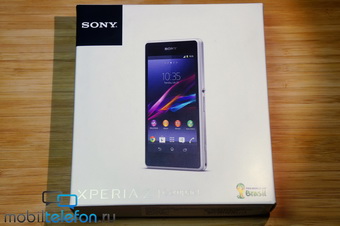
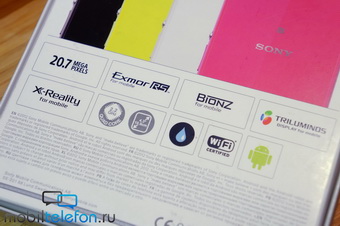
![]()

The packaging of the smartphone is similar to that of the Xperia Z1. It is very simple, without any special frills. The kit is also simple: just a sync cable and a block charger by 1.5A. The commercial package for Russia also includes MH750 headphones - very good as a headset and for listening to music, especially if you are not too picky about the sound quality. The device comes on the market in four colors (white, black, pink and lime), the lime version arrived for the test - the brightest and most interesting of them. It's rare to find top-end smartphones in such bright colors (the only exceptions are Nokia Lumia, and more recently iPhone 5C), so it is not surprising that the lime-yellow Z1 Compact is of great interest, both among journalists and future potential buyers (judging by the numerous discussions of the new product in social networks). By the way, the budget Xperia M in a similar color set a kind of sales record for Russian market, for the first time approaching in terms of the number of devices sold to the traditionally most popular black color variation of the same smartphone in Russia. In general, there are prerequisites for the great popularity of the Z1 Compact in lime color. Interestingly, unlike the previous top models, the metal frame of the Z1 Compact is also painted in the body color.
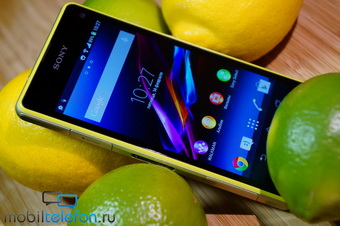
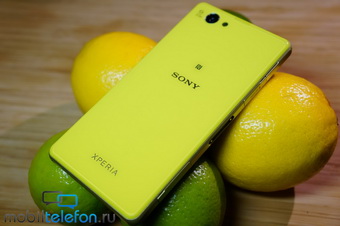
Outwardly, we have a complete copy of the Xperia Z1 with the OmniBalance design concept (balance and symmetry in all respects) in a reduced version, but the arrangement of the elements is slightly different. The front side is equipped with a 4.3 "IPS-display with a resolution of 1280x720 pixels. Here, as before, a lot of chips are used (TRILUMINOS backlight, whatever it means, the X-Reality software enhancer), but if before they looked like empty words (on Z1, for sure, unlike the Z Ultra), then they do not play any role here - the screen itself is simply excellent, the best of all that are now installed in Sony smartphones. all conditions), deep black (not the AMOLED level, and it is highlighted at diagonal angles, but this is not critical and looks decent against the background of other IPS-screens - the Nexus 5, for example, has a worse screen), excellent contrast and color rendition, very small inversion when tilting (in the same 5S it is more noticeable) .In general, only positive emotions from the screen. The increased sensitivity of the display slightly spoils the impression - the screen does not always accurately detect touches and swipes, but this is very rare (3-4 times per day b) and brings much less discomfort than a similar problem with the Xperia Z Ultra from early shipments with the first firmware. Probably, the problem will be fixed with the release of new software, if it is widespread, which is still difficult to judge, since, according to the reviews of the owners of commercial devices, not everyone encounters it. The screen itself is traditionally covered with a protective film. It will be very problematic to remove it (and the Sony logo will disappear), and it gets dirty and scratched the only way - purchasing a cover-cover or an additional protective film here it will definitely not be superfluous.
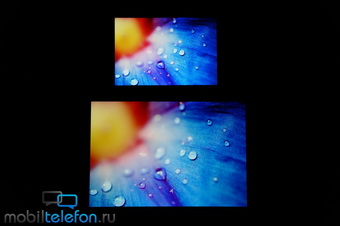
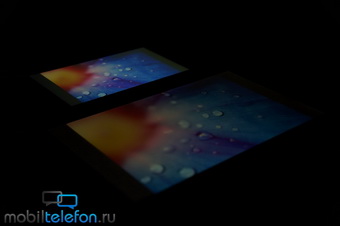
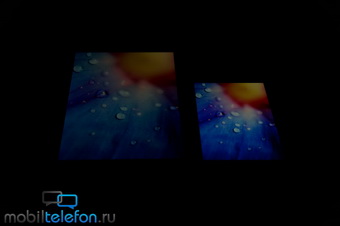
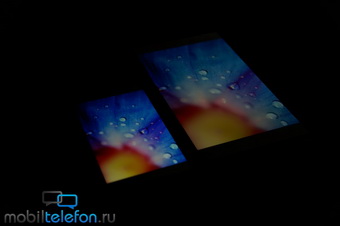
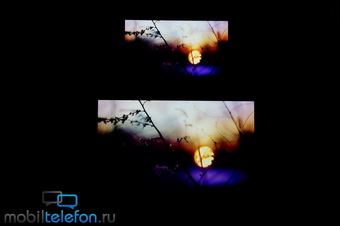

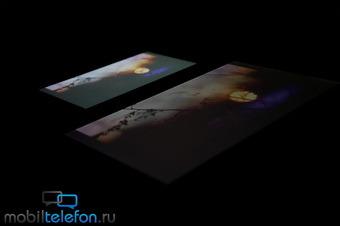
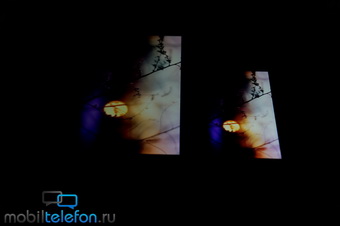
Some people criticize the Z1 Compact for its thick bezels around the screen (thinnest bezels and best example here Motorola Moto X with a 4.7 "screen in a smaller package than the Z1 Compact). But if you remember that the device is comparable in size to the Apple iPhone 5S, equipped with a smaller screen (4") with similar thick bezels, then call the compact flagship Sony " an absurd fat man "somehow does not turn his tongue, given the presence of a thick metal frame and a case protected from water and dust. the use of metal. Apparently, even in the upcoming full-size flagship Sony engineers it will not be possible to go very far in this direction, but in one of the next top models, the frames will most likely be reduced.
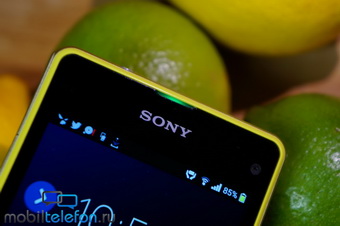
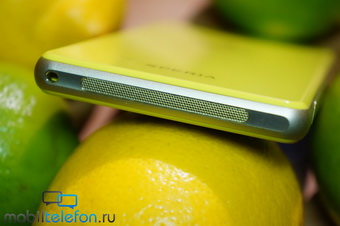
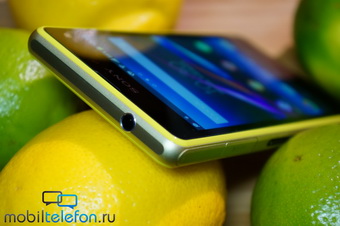

Above the screen, there are traditionally located proximity and light sensors, a 2 megapixel front camera, an earpiece (very loud and of high quality). A powerful LED (like the Z1) is hidden in the slot of the earpiece, flashing in different colors (green, orange and red for charging, white for notifications) - skip important message it will definitely not work. The lower end is equipped with a multimedia speaker, whose design inspires hope for its high volume and power, however, due to the moisture-resistant case and a protective membrane inside, the musical capabilities of the speaker are not striking. The volume is average, the sound is shallow. The microphone, apparently, is hidden by the same mesh. To the right of the speaker is the strap mount - Sony is one of the few companies that continues to use this design element. At the top there is a 3.5 mm audio jack, as in the case of the Z1, which is not equipped with a cap. He is not afraid of water ingress, but listening to music on the wire after swimming for a couple of hours is definitely not worth it.
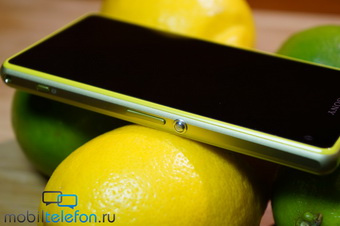
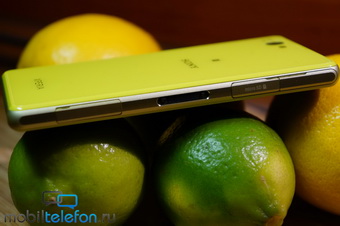

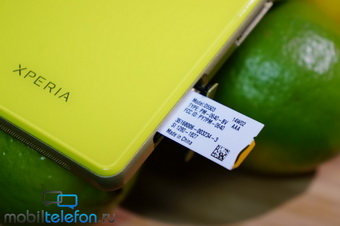
The right side of the device contains a proprietary metal power button (small and rather tight), volume keys and even a camera key (used to quick launch from standby mode and for shooting). It is also very small and not very convenient, but its presence will not be superfluous, especially for underwater photography (and the Z1 Compact allows you to do this thanks to protection from water and dust according to IP55 / 58 standards for half an hour at a depth of one and a half meters in fresh water). All connectors are located on the left side. The magnetic docking connector is located here. On sale there will be a proprietary dock DK32, however, the DK30 from Z Ultra will also fit the phone, if you remove the nozzle from it (I think the DK31 from Z1 will also work). In this case, the Z1 Compact does not sit very stable, but it holds up, and it charges perfectly (for the owners of the Z Ultra, note, so to speak). Slightly below is a slot for a micro-SIM card, in which you can also see a special tab, pulling on which you can find out the date of manufacture of the device. Our test demo was released in the second week of January 2014. Commercial samples go from the fourth week, and they are found already from the fifth. As a rule, the fresher the release date of the device, the better - the production is honed and comes into full force, which minimizes various possible defects. Above the magnetic pad are a microSD card slot and an MHL port. All slots and ports are covered with caps. After several charges, the MHL port cap did not loosen, but it is better to use a magnetic dock - this will maintain maximum tightness over time.
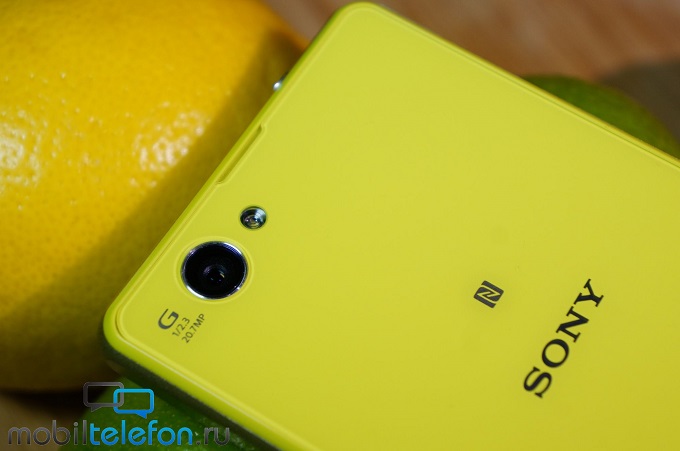
The back panel pleases the eye with a large eye of a 20.7-megapixel camera with G Lens, which migrated here from the older model, and a flash. Slightly above it is a slit similar to the hole in the earpiece (remember the OmniBalance concept), which is probably intended for an additional microphone, since there are no more holes on the body. Below you can see the company logos and the NFC tag indicating exactly where to lean compatible devices... Despite the fact that the Z1, Z Ultra and even their progenitor Z have a back panel made of glass, the Z1 Compact uses plastic (polycarbonate) without a protective film. There are exactly two drawbacks here: the plastic is scratched faster (on the very first day of relatively accurate wearing, there are several scratches left on it, visible in the light), and also creaks a little when pressed. But there are also pluses. For example, a smartphone heats up significantly less than its glass counterparts. More precisely, it heats up in about the same way, but it feels noticeably weaker. There are no external differences from the glass panel, and if you do not know about its plastic nature, you can not guess. There are three ways to check the actual absence of glass: open the device (radical method), try to scratch the front and back with a sharp object, or tap your nails on both sides of the smartphone at the same time. The sound from the front panel will be deeper, the rear - higher, while the same glass Xperia Z Ultra has the same sound from tapping on both sides. To preserve the most attractive presentation, it is again recommended to get a cover or film.
There are no complaints about the assembly of the device. A subtle creak when squeezed can be considered a design feature, but otherwise the Z1 Compact is as solid as possible. The solid metal frame inspires confidence and gives the device that very pleasant weight that makes it feel like a really high-quality thing, although for someone the smartphone will definitely be heavy - 140 grams, after all.
Software
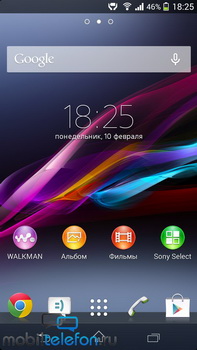
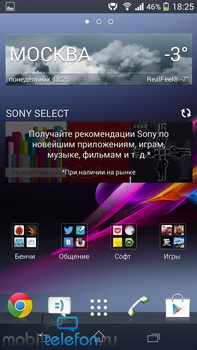
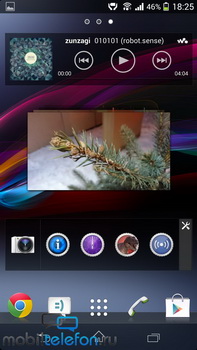
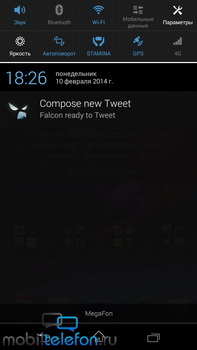
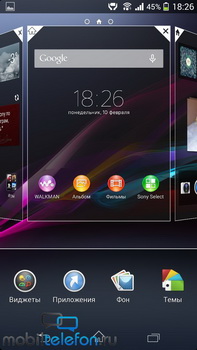
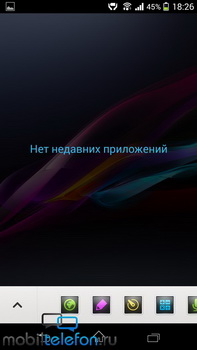
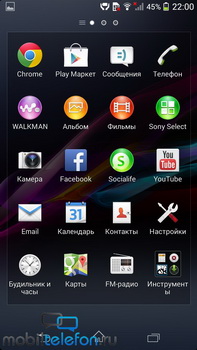
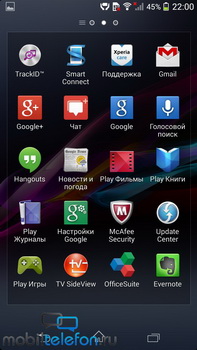
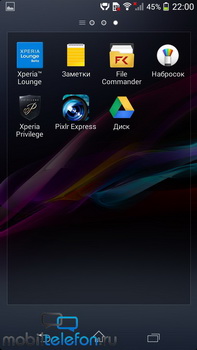
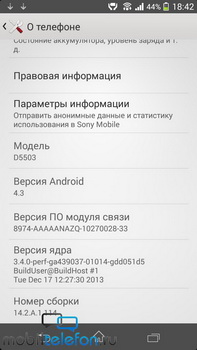

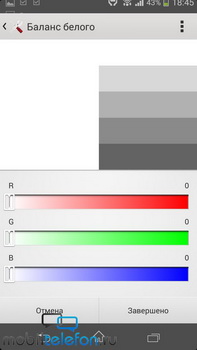
The smartphone runs Android 4.3 in the Xperia Home shell, as they say, out of the box. The timing of the update to 4.4 KitKat has not yet been specified, but there is no doubt that the device will receive new software in the first wave along with the Z1 and Z Ultra. In its current form (firmware 14.2.A.1.114), the device interface does not differ from that of the Xperia Z1 (the Z Ultra has a different screen grid, otherwise everything is the same). All the features characteristic of the last update are present here, but a couple of features inherent only to the Z1 Compact were not without. This is a mode of operation with a screen with gloves, as well as a white balance setting (it was previously in the Xperia ZL, in the Xperia Z1 and Ultra it appeared quite recently, while it was originally featured in the Z1f for the Japanese market).
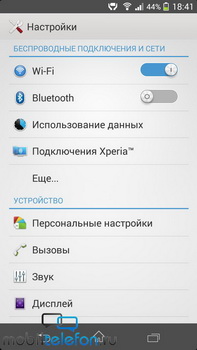
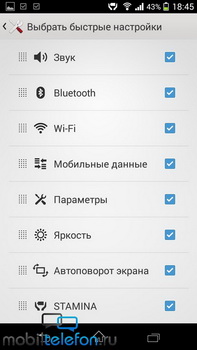
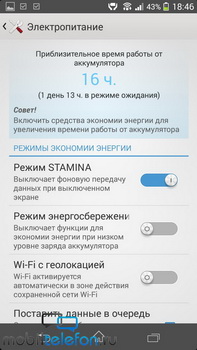
![]()

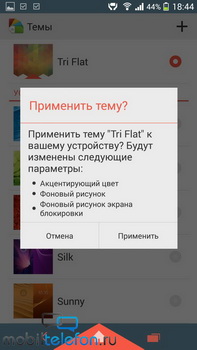
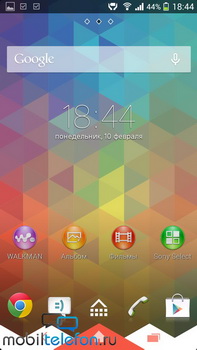
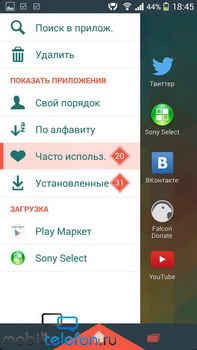
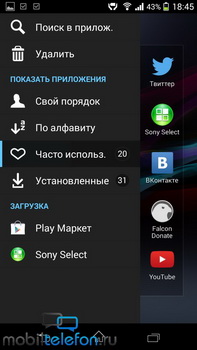

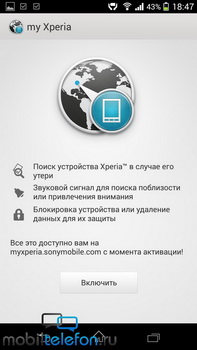
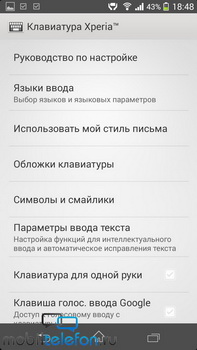
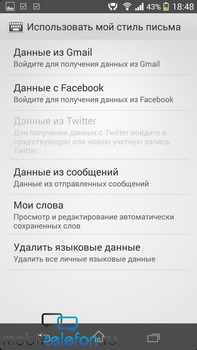
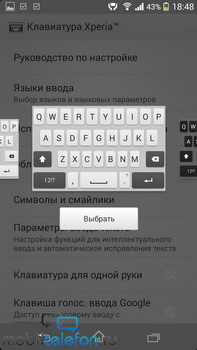
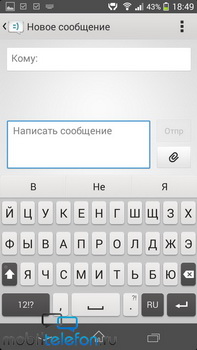
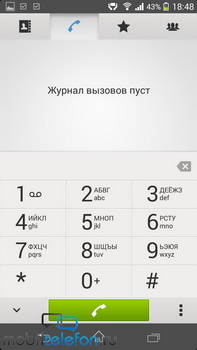

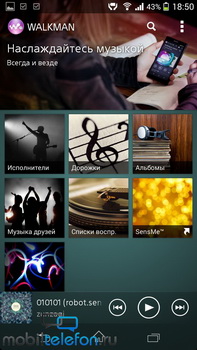
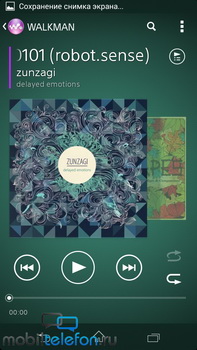
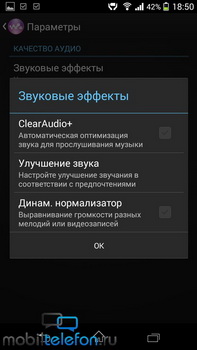
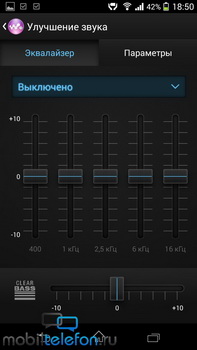
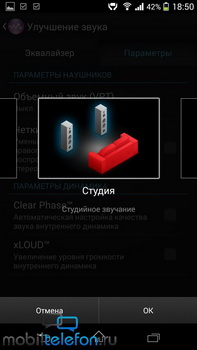
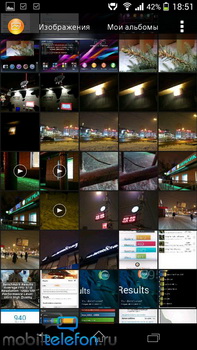
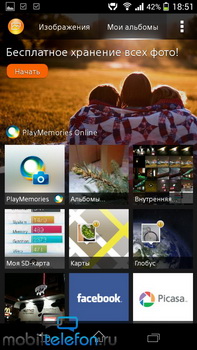
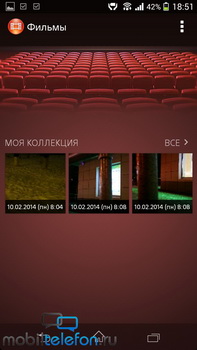

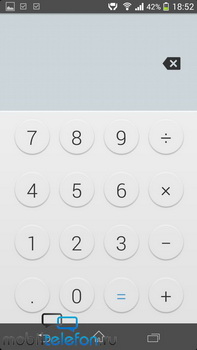
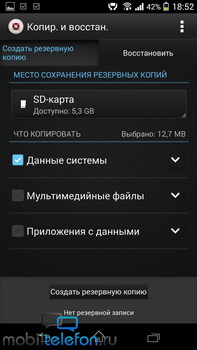
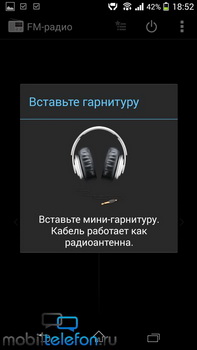
The rest of the software features are standard for the Xperia line. Once again, it makes no sense to list them all, see the screenshots.

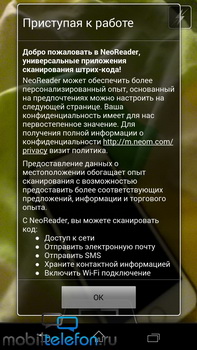
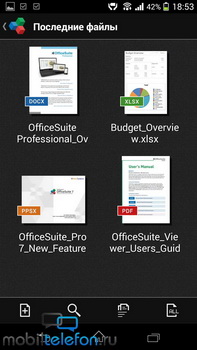
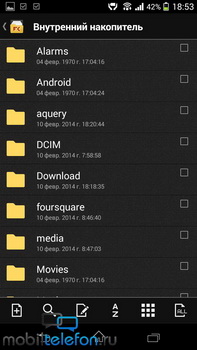
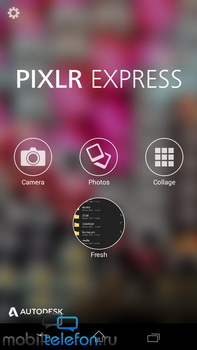


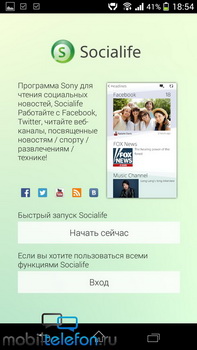
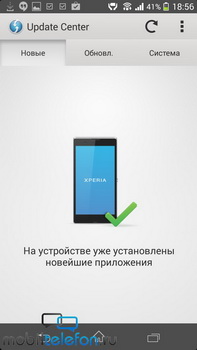
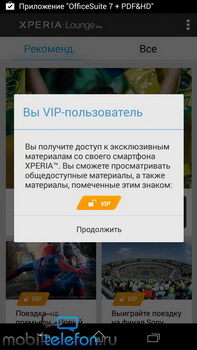

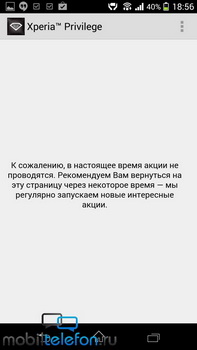
There was also a pre-installed third-party software. There is file manager File Commander, McAfee Security Antivirus, Office Suite for Document Viewer, Pixlr Express Photo Editor. If desired, they can all be removed without "dancing with a tambourine."
Camera
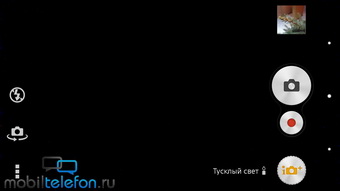

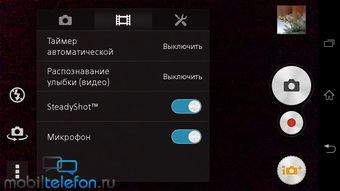
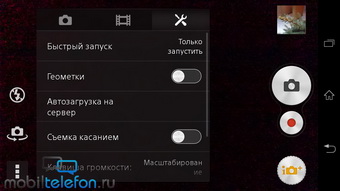
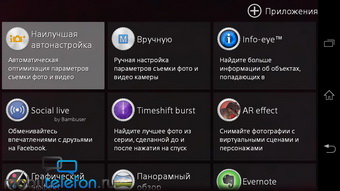
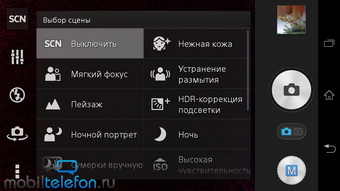
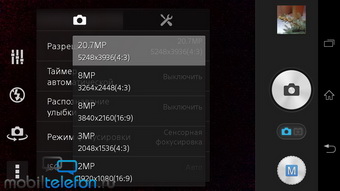
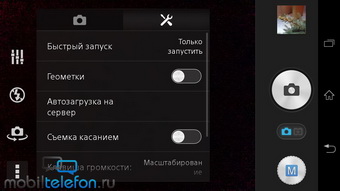
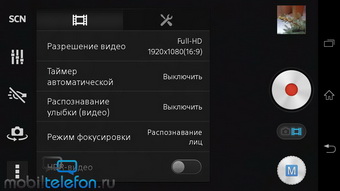
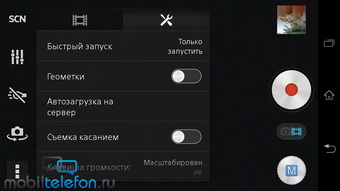
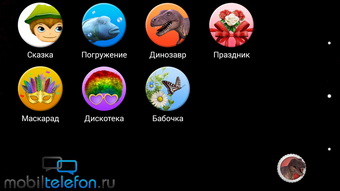
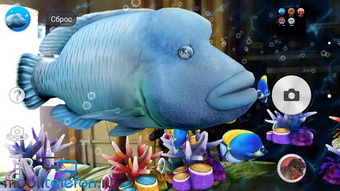
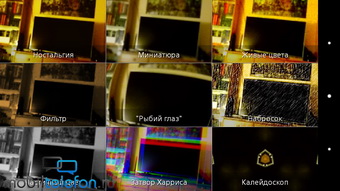
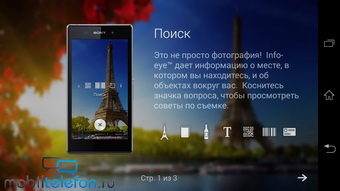
Sony Xperia Z1 Compact uses the same module as the flagship Xperia Z1 - 20.7 megapixel resolution, Exmor RS sensor, f / 2.0 aperture, sensor size is 1 / 2.3 ", pixel size is 1.1 microns. G optics are used. Lens, an electronic SteadyShot stabilizer is used to stabilize the image, which has successfully demonstrated its effectiveness in the Xperia Z1.The interface is standard for new Xperia devices, has many chips and peculiar additions for the camera (with funny augmented reality or information about objects, the ability to broadcast videos to Facebook, shoot 30 frames with one click, and so on), which can be supplemented with applications from Google Play (for example, a proprietary add-on Kinokadr is available for download, which makes shots in motion, and soon there will be Background Defocusing, which makes excellent bokeh in the style of SLR cameras).

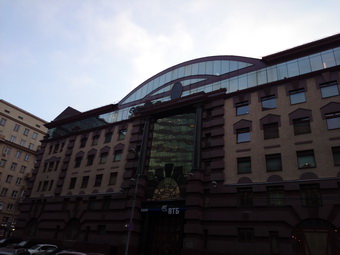

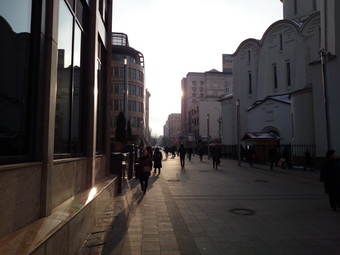
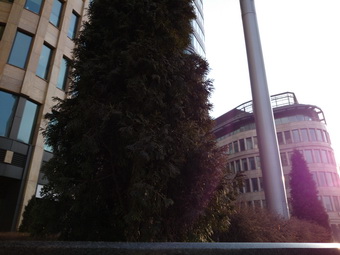


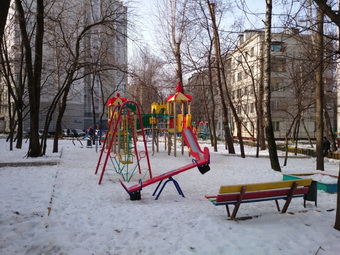
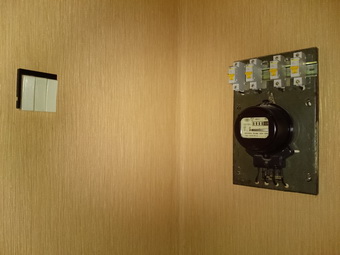
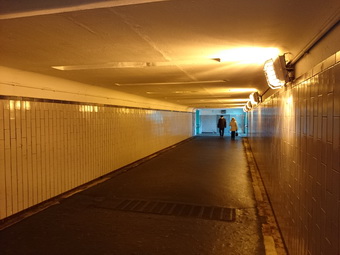
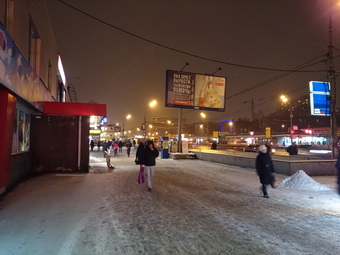
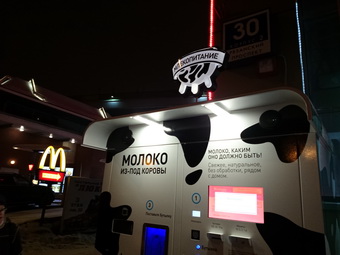
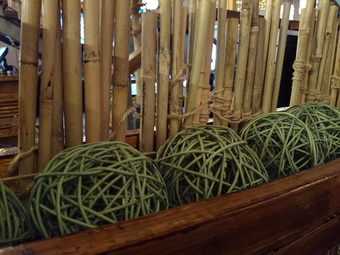
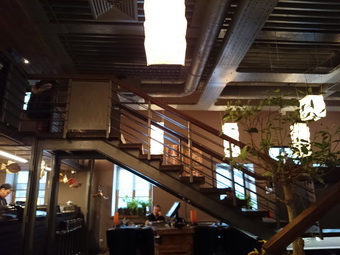




As for the quality of the pictures themselves, it is one of the best in Android market-smartphones. The only thing that can compete with the Z1 Compact is Samsung Galaxy Note 3, Meizu MX3 and Nexus 5 in HDR mode+, but these are already materials for a separate comparison (and you will definitely see them a little later). The original Sony Xperia Z1 performed well in comparison with Nokia's top Windows Phone cameras, so the Z1 Compact will perform just as well (we cannot compare directly at the moment). Compared to the Z1, the compact version, in my opinion and memory, has slightly changed the photo processing algorithms (there is more contrast and sharpness, but the noise and soap remained in their places), which gives us a reason to compare the Z1 and Z1 Compact in the near future. cameras in more detail. Below you can evaluate the quality of the pictures yourself, comparative shots with the Nexus 5 and Apple iPhone 5S will soon be published in separate materials. From myself, I can only notice that in the fully automatic mode the device shoots more accurately in colors than in the full-size mode with 20.7-megapixel photos. They tend to be darker than in reality, colors are less natural. Auto mode not only conveys the picture more accurately, but also gives photos a little more artistic expressiveness. Below are a few photos in auto mode, you can compare them with those presented above.
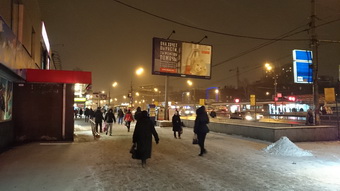
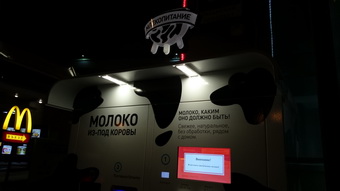


Full HD video quality is also very good. I especially want to note its impressive smoothness, thanks to the extremely effective electronic stabilization of SteadyShot (it works even better than the optical one on a number of models). The Z1 Compact camera reproduces colors and sound well, but the device is unlikely to cope with concert shooting with dignity, however, like previous Sony models. In not the best conditions for shooting, the video quality becomes worse, the device does not always quickly focus even on general shots (focusing on macro does not always work well during the day, but it happens rarely). In general, see the example below and do not forget to evaluate the capabilities of the Z1 Compact against the Nexus 5 and iPhone 5S soon on our website!
Performance and experience
The device is based on the Snapdragon 800 chipset with a frequency of 2.2 GHz, has 2 GB of RAM and an Adreno 330 graphics accelerator. This makes the smartphone the only compact flagship on the market with a filling similar to the company's current full-size flagship. Moreover, judging by the latest leaks, the Z1 Compact will maintain this position among the mini-flagships of the Android world for a long time to come. The upcoming LG G2 mini is significantly weaker in terms of characteristics, the planned HTC One mini 2 will also be weaker. Probably, only Samsung will be able to oppose the Japanese smartphone with something more worthy than its competitors, but even then there are big doubts about this. In general, Sony hit the spot. There is no other device that is equally powerful and compact on the Android market, and it will not appear soon. It is reasonable to assume that with such a filling and an HD screen, the device should work just lightning fast, show incredible performance in synthetic tests and benchmarks. And here something unexpected lurks. In the case of the interface and the smoothness of the system, there are no problems. Sometimes there are rare shell jams, widgets sometimes reboot (this is typical for Xperia Home and it should be in Sony devices if you haven't used one of the screens for several minutes).
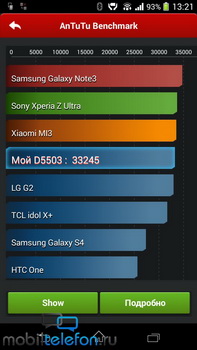
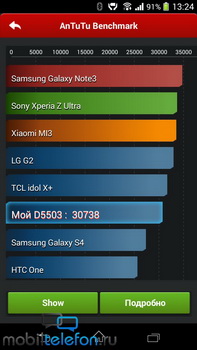
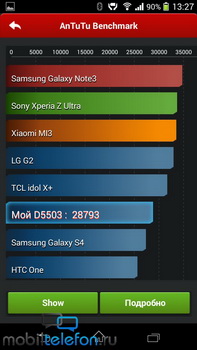
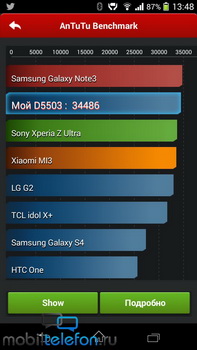
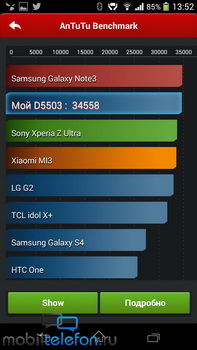
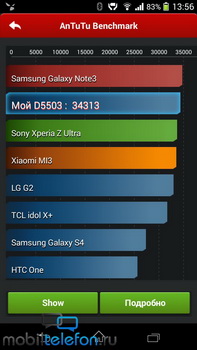
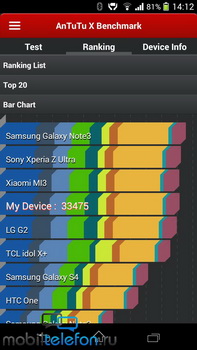
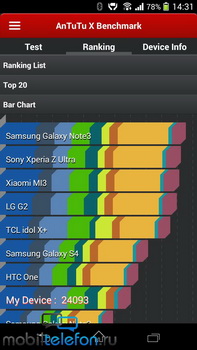
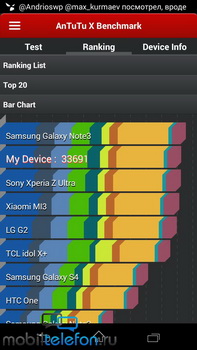

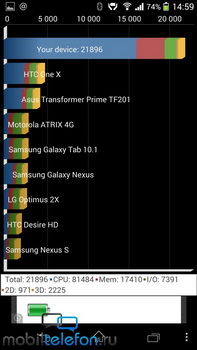
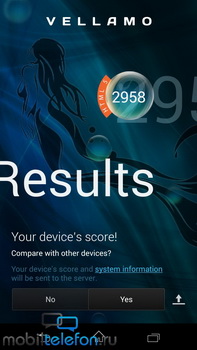
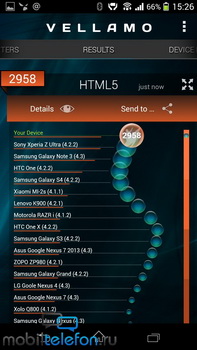
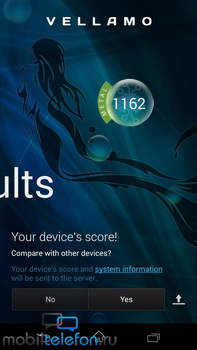
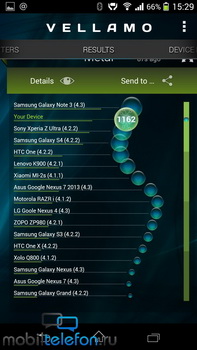
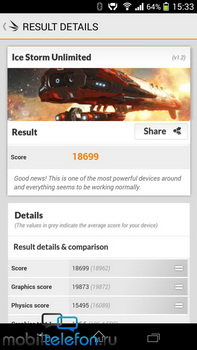
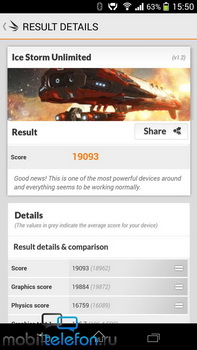
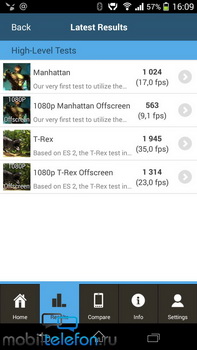
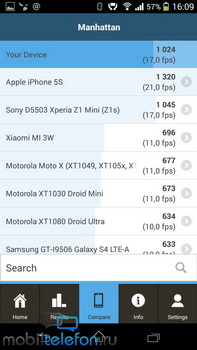
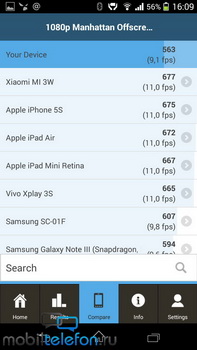
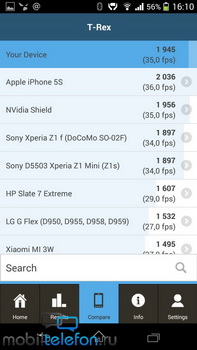
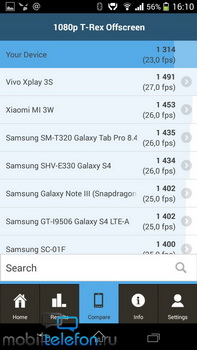
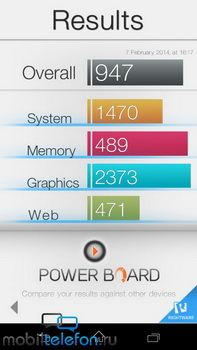
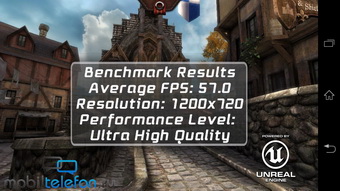
According to the results of synthetic tests, nothing extraordinary is also revealed - all indicators are at the level current flagships with Full HD screens... In AnTuTu - 34 558, AnTuTu X - 33 691, Geekbench 3 - 940/2849, Quadrant - 21 896, Vellamo - 2958/1162, 3DMark - 19 093, Epic Citadel Ultra Quality - 57 fps, GFXBench 3.0 - 17/9, 1/35/23 fps, Basemark OS II - 947 points. That is, in fact, HD-resolution does not provide any performance gain. It is worth mentioning here that our test unit is not for sale and is a demo. At the beginning of the review, I wrote that some differences from the commercial sample in our Z1 Compact are still observed, and they are revealed just in the performance tests. Our device heats up a lot and gives maximum results only in the refrigerator for a number of tests, while commercial devices do not suffer from such problems and heat up much less. To prove this, see the Stability Test results below.
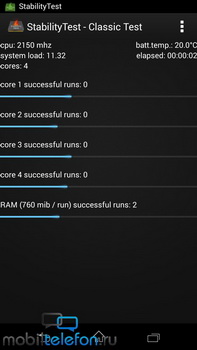
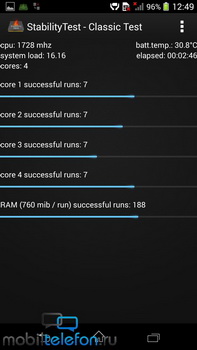
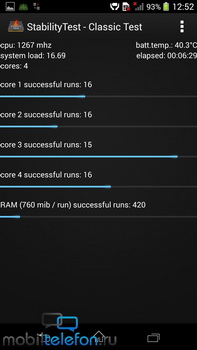

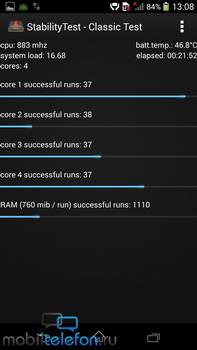
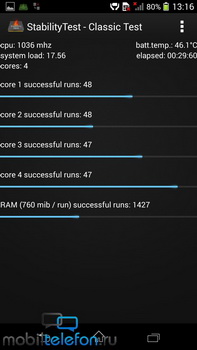
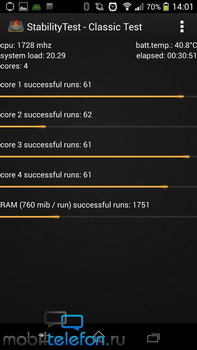
As you can see, the test Z1 Compact is not doing very well with heating - 46 degrees in half an hour according to the results of the test run, strong drops in the processor frequency. The commercial Z1 Compact showed itself much better and only warmed up to 40 degrees, showing better results in terms of frequency and behavior during the test. This is even lower than the normal 42 degrees for the Snapdragon 800. This is noticeably lower than the test Compact, as well as the Xperia Z1 (47 degrees) and Nexus 5 (47.5 degrees). Probably, we came across not the most successful demo sample, or the company saved on the amount of thermal paste for the entire batch of test smartphones produced in the second week of this year (if you find one on sale in a store or from dealers, be careful).
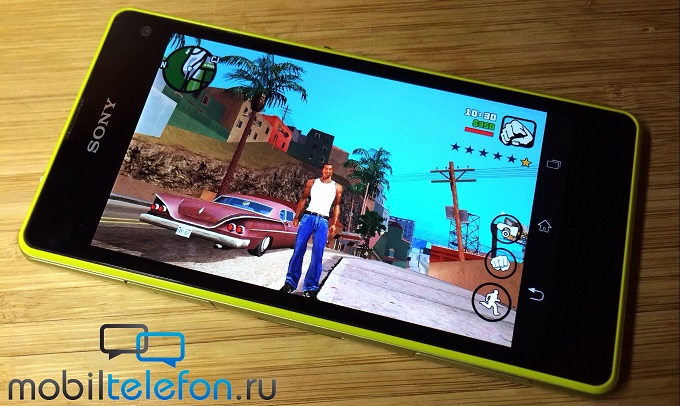
With games on the smartphone, everything is fine. Top hits go without brakes (however, in Modern Combat 4, the graphics are not maximum and the fault lies with the developer - Gameloft), only Gta san Andreas cannot boast of the ideal speed for a long time playing (but this is completely normal for this toy, since it lags on absolutely all Android smartphones).
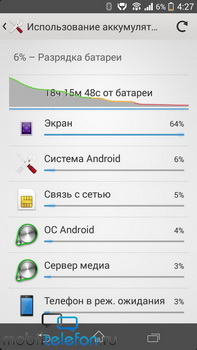
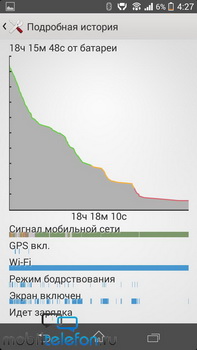

The autonomy of the device with its 2300 mAh battery is excellent. The phone lives a full working day and even a little more. In general, you can count on 13-15 hours of active use of all functions with STAMINA mode on and about 5.5 hours of active screen. In HD video viewing mode at maximum brightness and volume, the smartphone will last for 10 hours (the discharge is 9-10% per hour), in the case of games - 3.5 hours at maximum brightness and volume in GTA San Andreas.
The telephone functions work flawlessly, the sound quality in the headphones is very good, except that there is almost no headroom.
During the week of active use of serious software failures, exactly two were identified, but both of them passed after full reset data. In the first case, the so-called "death sleep" manifested itself in the apparatus - a too long way out or not coming out of a blocked state altogether. In the second case, the telephone part of the Z1 Compact stopped functioning normally - strong wheezing of the spoken speaker did not allow to hear the interlocutor normally, and the person on the other end of the line complained of strong wheezing of my voice. I repeat once again that a complete clearing of all data saved the device from all problems, so if you suddenly come across something like this, you know what to do. As a last resort, software recovery via PC Companion or Sony Update Service with data formatting can help. I note that several familiar owners of commercial devices did not complain about any of the problems listed above. Obviously, there have been software failures that will be cured with updates.
Output
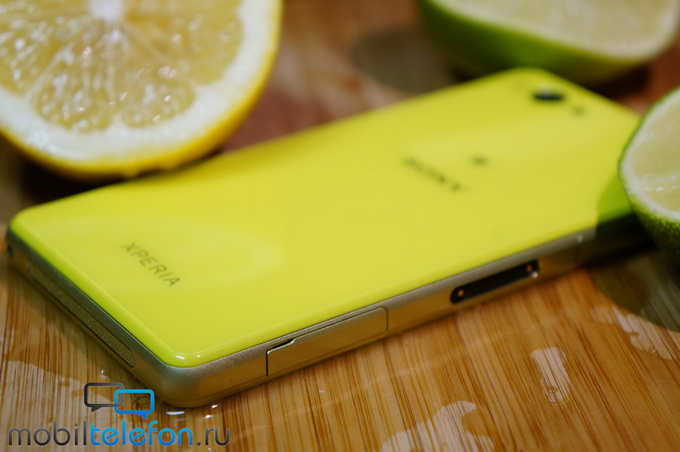
Sony got it great smartphone... Perhaps this is the best device of the company since the release of the ancestor of the new line - the classic Xperia Z. It is not only no worse than the current full-size flagship Xperia Z1, but also better - especially the screen quality and autonomy. Z1 Compact has no Android devices yet, and no competitors are foreseen. For a comparable price (21,990 rubles) there are a lot of offers from other companies, but among them there is not a single one that is as compact, productive and secure. Among smartphones based on other systems, the Z1 Compact now has only one competitor - the Apple iPhone 5S. You can read a comparative review of these two pocket monsters on our website the other day. Well, if you suddenly think that it is better to take LG / Google Nexus 5 for 16,000-18,000 rubles and save money, then another comparative review is being prepared for you, which you can read and watch very soon. Stay with us!















